An independent magazine for independent retailers Issue 122, March 2023

Dog of the month: Pip The Seriously Good Wine Co Lyme Regis


An independent magazine for independent retailers Issue 122, March 2023

Dog of the month: Pip The Seriously Good Wine Co Lyme Regis

Survey shows pessimism at a new high, yet the majority of merchants believe they can ride out the current storm
Independents remain upbeat about their prospects in the coming year, despite confidence – and, in many cases, sales – taking a knock.
This year’s Wine Merchant survey involved more than 200 businesses who shared information about their performances in 2022 and hopes for 2023.
The proportion of indies feeling gloomy about the year ahead has hit a new high, with 13% saying they are fairly pessimistic and 2% saying they are very pessimistic. But 12% remain very optimistic and 39% are fairly optimistic, the survey found.
Almost four in 10 indies report a decline in sales over the past year – about the same proportion as those who saw an increase.
Average turnover per business now stands at £863,413, according to the survey, though this figure is perhaps higher than the true average as it includes some responses from larger independents with big wholesaling operations. The median average figure, of £550,000, is probably more representative.
Wine in all its forms contributes about three-quarters of indie turnover. Just over half of revenue is generated by walk-in trade, with wholesaling, online sales and drinking-in contributing most of the remainder.
The average price of a bottle of still wine
in the independent trade has risen 60p, to £15.70, compared to a market average of £6.35. But basket spend is down by 41p and now stands at £52.20.
Almost half of all indies are now hybrid shops and bars, restoring a trend that had
Continues page 2



From page 1
been derailed by Covid.
The survey, which is organised in partnership with Hatch Mansfield, reveals that Italian wines are now leading the way for indies both in terms of the interest they generate and the sales they achieve.
Jefferson Boss of StarmoreBoss in Sheffield says: “This year feels like it will be tougher than last year for trading, the main factor being the price rises across all sectors of the business, but mostly the increase in prices of the bottles on the shelves versus the stagnation in wages.


“We’ll have to look at the range closely and adapt our offering according to the market and look to find more inventive ways of supporting our revenue streams and adding value to increase sales.”


Nathaniel Carpentier of Dalling & Co in Kings Langley believes indies can create business even in a cost-of-living crisis.
“We are optimistic that retail can bridge the gap where on-trade sales fall,” he says. “Going out will likely be one of the first budget cuts families make, opting for a more budget-friendly staying-in. A wine that is a treat at a retail price point is substantially less expensive than a completely average wine at any restaurant. Educating customers that they
can get more for less at home will be a key campaign this year.”
But many indies have also been sounding a note of caution. “At the moment we are really not sure what impact the current economic climate is going to have on our business in 2023,” admits Paul Tate-Smith of Derventio Wines in North Yorkshire. “We know we are going to have to work hard to deliver value and quality to our customers.”

Stefan Botfield of The Wine Cellar in Woburn adds: “We plan to grow as a business this year so therefore should see increased sales, but I’m not sure, over and above inflation, that we would necessarily expect our sales to increase per store.”
• Survey analysis begins on page 23 and continues in our April edition.




Claire Harries claire@winemerchantmag.com
Sarah Hunnisett sarah@winemerchantmag.com
naomi@winemerchantmag.com

The Grape Escape opened last year in Ipswich, just in time to catch the Christmas trade.
Co-owner Lucy Newton says that the last few months have been “frantic,” but she hopes she will soon be able to leave her full-time job in HR and join her business partner in the shop.

The store has an eight-bottle Enomatic, and Newton says the locals are gradually coming round to the hybrid concept.
“I think people are still a little bit confused about what we are,” she says. “We’re not trying to be a bar at all. On a Friday and Saturday we might be open until 6pm or 6.30pm. The Enomatics are very much to encourage people to try new things. We can give them just a taster from them or they can sit in and have a glass in the afternoon, and that’s slowly picking up.”
Newton is working with several suppliers including Marta Vine and Hallgarten.
“We really love working with Marta,” she says. “After our launch event everyone was just waxing lyrical about the Portuguese wines. She’s been so supportive and she’s always so super enthusiastic.”
Newton is also buying wine from Substrata Wines, a small importer in Norwich. “They predominantly focus on more natural and biodynamic wines,” says Newton. “We got to know them because we had visited their shop and they are the
sole importer for a winery in France that belongs to someone I know.”
As well as in-store wine tastings, The Grape Escape will also offer gin blending experiences using a homemade still.

“We’re just thinking of other ways we can bring in the revenue, and it’s all about building up that customer loyalty,” says Newton.
Licensing permitting, Taylor Wines will open on Crown Street in Brentwood by the end of March.
Owner Ed Taylor previously worked at Luckins Wine Store in Great Dunmow. He already imports and wholesales wines through his online business, and he is hoping to grow that side of his trade alongside the new bricks-and-mortar element.
“I import from a wide range of places including Georgia and Slovenia … everywhere, really,” he says. “It’s very varied and once it’s sold out, it’s on to something new. It’s nice doing it that way
because it allows customers to try new stuff.”
Taylor plans to run ticketed tastings on Fridays and Saturdays. “For £35 you’ll get a glass of fizz, a couple of white and a couple of red wines, a rosé, a port and a cheese board. And then I’ll do some events in the evening for private parties.”
While Taylor says he enjoys finding the best deals he can on his buying missions, he is realistic about catering for the needs of his customers.
“I like to have a bit of variation,” he says, “but a certain extent of it will lean into more what people want, like top-end New Zealand Sauvignons that sell well, and some of the heavier Australian styles. Then I’ll have some odd bits that I’ll use in the tastings for people to try – and see what they think of the stuff they wouldn’t have tried before.”
• There are plans for The Wine Cabinet to open in Bromham, Wiltshire, towards the end of this year. Greg Wilkinson will be operating his business online until he can take possession of his premises in November. He is already in talks with suppliers including Liberty Wines.

The Cellar by Wine Monkey will open towards the end of April in Chippenham.
Owner Bryan Houde initially created the Wine Monkey website as a vehicle to sell wines made by producers that he has a relationship with. Houde has worked at several wineries and in vineyards across France and southern Oregon and is keen to represent those wines in the UK.
“I’m looking to direct import the wines that I specifically have chosen,” Houde says. “If others that I want are already here, like Chêne Bleu, then I will work with those suppliers. I’d rather import myself when I can, but I’m not looking to become a big merchant-distributor.
“Now I’ve got this bricks-and-mortar space I have more room to store wine and I can expand.
“I’m very excited that I’ll be bringing on another winery where I was an intern years ago in the Roussillon. They are a really small boutique, organic winery: a husband-and-wife team who are doing fantastic things. They have been keen to get into the UK and I’ve always said, ‘as soon as I can do it, I’m going to do it’. I’d like to keep adding more one-to-one relationship partner wineries where I can.”
Houde is working with Sustainable Wine Solutions (part of Borough Wines), for his tap system. Although this is mainly intended for the bar, it will also make refills available for retail.
There will be a range of craft beers and spirits, as well as cheese and charcuterie boards with homemade hummus and tapenade.
Houde describes the

premises as “a completely white box” when he took it on. “There was no power, no toilets, no heating, nothing. This week the guys have been putting up the walls, putting in the ceiling, and it looks like a space now. I can start to see how it’s going to come together,” he says.
“The concrete floors are really good looking so I’ll seal them and leave them exposed. I want a lot of plant life and natural materials inside, so wood and things to add texture. We’ve got floor-toceiling windows so it’s really a bright and airy space.”
Matt Ellis of The Smiling Grape isn’t smiling at Facebook, which has summarily shut down his page.

Whitstable will soon be home to Carol’s, a new wine shop and café. Owner Stuart Fitchie has chosen the premises for his new venture based on its proximity to the beach.
“I live in Whitstable,” he says, “and if you’re on the beach and want to get something to drink, some beers or some wine, you have to go either 10 minutes one way or 10 minutes the other. I’ve been trying to find a spot on that parade for years. It’s quite small but it’s got a nice patio at the front with room for tables and chairs. We’ll be offering coffee and pastries during the day, to take away or have on the premises.”
Fitchie, who is also the chairman of Herne Bay Football Club, admits it’s early days and he’s still planning the aesthetics and the stock, but he hopes to be up and running by the end of March.
“By the end of the month might be a bit adventurous but that’s my way of doing things,” he says. “Everyone hates it because I always want to just press the button and then go, go, go and have a bit of a mad rush. I’m not the guy that plans things out over a long period of time.”
“It’s probably due to our funny bottle neck labels, such as matching wine with Janet Jackson’s infamous Super Bowl appearance, or maybe it was our fun own-label wines,” says the St Neots merchant. “I did ask Facebook why the page had been disabled, but due to some law they couldn’t tell me the reason, just that we had broken their T&Cs. Such a shame as we’d built up almost 3,000 followers. Facebook won’t be getting any more money from us for advertising. This is out of principle but also due to the fact that we can’t seem to log into our account anymore.”
English wine producers have spent many years explaining that their terroir is the same as Champagne, the climate is more or less on a par, and sparkling wine is made in an identical way, with the same three grapes. So it’s curious to see Riedel launching a bespoke English wine glass, to be sold separately from its existing Champagne range.
Not that too many indies are likely to be placing orders. A merchant in Essex, at one time one of the few independents to go big on glassware, has given up on the category. “Our Riedel rep left, and was not replaced, so we never saw anybody,” he reports. “But the main problem was seeing so many Riedel products being sold on the cheap in TK Maxx.”
Anyone who went along to Boutinot’s recent London tasting may well have spotted Ann Hayes, proprietor of Ann et Vin in Newark, who we interrupted as she tucked into the cheese sandwich she had wisely brought down from Nottinghamshire. Her hair looked nice: the handiwork of her local salon Inizio, which is now Ann’s customer as well as her stylist. The premises has started doubling up as a wine bar on Fridays and Saturdays, and Ann assures us it does not smell of setting lotion.
Next month will see the opening of Victor Indigo November, a wine shop and bar in Gateshead.
The business will specialise in French wine, which will account for 60% of the range, sourced from Yapp Bros and VineTrail. Wines from Boutinot will complete the line-up, which will start with 200 lines but may grow to nearer 1,000.
Owner Charlotte Fenwick says her love of wine had developed to the point where just blogging about it wasn’t enough.
It’s been seven years since she had a bit of a wine epiphany while on her honeymoon in the Rhône Valley. Since then, Charlotte, a former accountant, and her wife Lorrie have made all their holidays about wine.

Missing their sojourns to wine regions during lockdown, Charlotte says she turned to home study. “During that time, I just read a lot about wine and absorbed all this knowledge,” she says. “I started a wine blog and I just developed a real understanding of the people and places behind it. Then in 2021 I did my WSET Level 2 and I really enjoyed it. I was still working as an accountant at that point. It’s a great career, but it wasn’t exciting me. So I had this idea that I wanted to move into the wine industry, but wasn’t really sure what I would do.”
Charlotte says the death of her brother at the end of 2021 was the catalyst for her decision to start her own wine business.
“It changed my entire kind of outlook on life and my mindset,” she says. “The thing about being an accountant is it does pay well, it’s a secure job and you can save for a pension and all of these things. But I just realised that you’re saving for a retirement that is not guaranteed. You’re
working really hard for the future and not actually living for today. So after we lost Daniel, I just started planning this, because life is too short and I need to find ways to make myself happy.”
VIN will also have a small range of spirits, beers, ciders and soft drinks at the bar, but the couple don’t want to step on the toes of the neighbouring micro pubs.

The old railway arch in Gateshead’s Bridges Quarter was an empty shell when the pair took it on in January. Lorrie’s plastering skills and general “hard graft” have transformed the premises, with new flooring and pine shelving lending a “rustic” vibe.

“We’re building the counter ourselves,” says Charlotte, “and we’re putting really nice dark wood benches in the window. It will have a French bistro feel. It’s quite open-plan; the bar and the retail area flow together.
“We’ve got about 60 square metres. These arches are deceptively big, but it’s very cold. Once we’ve got people in here, and our wine fridge and our cheese counter, those will kick out a bit of heat. It will never be boiling hot, so that’s great for the wine.”
Eline restaurant in Hoxton now has its own wine shop. Kimchi’s Bottle Shop has been described as “dinky” and, as it sits in the entrance to the restaurant itself, that’s a pretty fair analysis.
“We don’t have a separation between our shop and the restaurant,” says coowner Maria Viviani. “For us it’s a very combined thing. We buy mostly for the restaurant and sell for the shop around it. Our menu changes monthly, so when we have something in the shop we think would be interesting with a current dish, we move it towards the restaurant and take another wine back to the shop. It allows us to have a broader selection because we are very small as a restaurant as well.”
Viviani is working with suppliers including Ancestrel, Wines Under the Bonnet, Newcomer and Modal Wines.
“We’re having a good time and people are enjoying themselves in here. We’re finding the right customers are coming through the door. They’re cool and interesting. They’re asking lots of questions and they want wine recommendations.”

Shipping delays cause frustration and added expense for wine importers. They can also spoil the wine.
One independent in north west England is convinced that some of the South American reds it’s been buying from UK agency businesses are madeirised. That’s an obvious sign of heat damage, and the suspicion has to be that pallets or containers have been sitting around in warm weather for longer than they should have been.
“We have experienced a number of bottles in bad condition for a while, seemingly caused by heat damage,” says Edward Speakman, director of Morgan Edwards in Knutsford, Cheshire.
“The wines cover a few different countries from two of our suppliers, who maintain that there isn’t a batch problem, which seems hard to believe.”
Speakman prefers not to publicly name the suppliers concerned, who he says have dealt with the problem swiftly and not quibbled over credit notes. But he’s interested to know how widespread the issue could be, and if other independents have noticed similar faults.
“We took a case of Chilean Pinot Noir to a tasting, and four of the six were madeirised,” he says. “Last week we had
some Merlot from the same producer and there were another couple of really madeirised wines.”
Morgan Edwards also sources a South American Marselan from another UK supplier. “I think we’ve had 18 bottles of that one recently, and probably at least half are in a bad condition,” he says. “We just thought, this is too much of a coincidence.
“The Merlot has a madeirised smell. And it wasn’t clear anymore; it’s gone cloudy, with almost a strawberry colour. All the bottles have had a tannin film stuck to the glass.”
It’s interesting to Speakman that not all the wines in the same consignment suffer from similar issues. “It could just be the wines that are on the side of the pallet that’s in the sun,” he suggests. “So it’s restricted to a couple of bottles per case.”
One major supplier who we contacted – which does not work with Morgan Edwards – admitted that the problem exists.
“We’re looking into a couple of issues from South America which could be related to wines sitting too long in ports or warehouses,” a spokesman says, “although that’s only a couple out of 100 or more wines, so not too drastic.
“Generally we haven’t noticed a
widespread problem, though, so hopefully these are just isolated incidents.
“Argentina seemed to be the biggest issue for us in terms of moving stock, so that would be the most likely casualty of any QC issues.”
Two South American specialists contacted by The Wine Merchant – again, unconnected to the wines being discussed by Morgan Edwards – say they have not experienced any issues with heat-damaged wines.
Lee Evans of Condor Wines says delays have not been a headache for some time. “Certainly we’ve not had any reports of any problems, and we ship a lot from South America,” he says.
“Yes, probably 12 months ago, things were taking longer than normal to arrive. But now, we don’t have anywhere near the same problems in terms of timing that we had five months ago.
“Last year, we were seeing some shipments taking five to six months. Now that’s getting back down to three to four months.”
Laurie Webster of Ucopia Fine Wines adds: “In all my years importing from Argentina, this has never been a thing. It’s certainly not a trend I am currently aware of.
“I think if it were due to shipping delays the wines in question must have been shipped last year when we experienced the worst delays ever – six to seven months from purchase order to receipt of goods in the UK port.
“If other importers have experienced delays like this over this winter – summer in South America – then it’s quite possible that wines would have been affected if they were sitting in port for a long time in a metal container.
“Fortunately our delays spanned the cooler months in the southern hemisphere and none of our wines are showing any issues of this kind.”
For Morgan Edwards, there is an unexpected silver lining to this particular cloud. “A lot of our customers tried the madeirised Marselan, and they loved it,” says Speakman.
“They said it tasted like port.”


Once again, our reader survey sponsor Hatch Mansfield has donated five Coravins to respondents selected at random.
This years’s winners are:
• Alex Roberts and Wayne Blomfield, Park Vintners, west London

• Stuart Rothwell, The Vineyard, Ramsbottom
• Ann Hayes, Ann et Vin, Newark
• Tom Hemmingway, Highbury Vintners, London
• Mitchells Wine Merchants, Sheffield.
This variation on the hugely popular negroni became a viral sensation last year after cast members of the fantasy TV series House of the Dragon discussed it on a TikTok video, with reported Google searches for the drink increasing sixfold in a week. The sbagliato (an Italian word for wrong) was created accidentally by a Milanese bartender in the 1980s when he absent-mindedly put sparkling wine into a negroni instead of gin, which should cheer anyone who worries that they’re not doing at-home cocktail making “right”. It’s an agreeably light and refreshing take on the conventional serve. Try steeping chopped berries in the Campari for 48 hours, then straining out the fruit, for a summery twist.




Scotland’s Deposit Return Scheme has led to wailing and gnashing of teeth among Scots merchants. But it also spells problems for drinks retailers in other parts of the UK.
Anyone selling online to Scottish consumers needs to sign up to the DRS. But rather than engaging in the expensive and complicated task of compliance, many English and Welsh merchants may simply choose to give up their Scottish customers.
The Scottish Environment Protection Agency website states that all online retailers must “only sell drinks to consumers in Scotland from registered producers”. Retailers will also be under legal obligation to “charge the 20p deposit when selling a drink to a consumer in Scotland”, while also making it “clear to the customer that the drink is part of the scheme and a deposit applies”.
“SEPA are very clear that non-Scottish articles must not be sold to consumers in Scotland. It would be an offence to do so. There seems to be little or no guidance to English firms, especially small ones, on how to navigate this.
“We have three options,” he continues. “One, we exclude Scottish customers and refuse to supply them. Two, we only allow Scottish customers to buy selected, approved products; or three, we register all our products at great cost and still have to come up with a way of charging Scottish customers the extra 20p.
“I fear we are more likely to take the first option. The poor customers in Scotland are going to get a rough deal.”

3cl Campari

3cl sweet red vermouth
6cl Prosecco

Simply pour the ingredients into an old-fashioned glass containing ice and stir.

Whether or not retailers outside of Scotland have to operate a takeback service for the empty containers is currently under review by the Scottish government. Richard Davis at DBM Wines in Bristol says: “We’ve been thinking of the best way of dealing with it. It’s particularly tricky as some of our suppliers will already have their products registered with SEPA, others will not, including anything we ship direct.
London merchant Theatre of Wine says it may also stop e-commerce to Scotland. Director Jason Millar explains: “If this goes ahead, we would simply end web sales to Scotland. It is a shame, but the value of sales to Scotland would in no way justify the amount of time, effort and admin required to meet the new regulations.
“This will limit the choice and variety available in Scotland because of incompetent and unworkable legislation from the Scottish government.”
At the time of going to press, the deadline has been reached for producer registration but, as industry bodies continue to seek clarification, there is hope the entire scheme will be abandoned. SNP candidates to succeed Nicola Sturgeon as first minister have hinted at a delay.
SEPA was unable to answer questions put to it by The Wine Merchant covering the scheme’s VAT implications, checks and penalties and support for small businesses.
‘There seems to be little or no guidance to English firms, especially small ones, on how to navigate this’





tremendous but I doubt they drink much of it in Champagne.
Outside of mainland Europe producers are not restricted by regulations on varieties, regional quirks and limited yields – or quality control, as I like to call it. A winemaker in southern Australia can blend grapes grown in Tasmania with some from the Margaret River without the limitations of using only those grown in his own back yard for countless generations. (To be fair, they could do something similar in Europe, but tend not to).
My sister moved to New Zealand about 16 years ago. She often suggests that I should visit but it is never going to happen. My tolerance for flying is a maximum of three hours and I never have more than three days away from the shop.

“But,” says my sister, “the scenery is wonderful.” I live in Dorset. “Yes, but the coast is fantastic and we can go sea fishing.” I live in Dorset. I’ve been sea fishing. I caught a lot of fish using a special baiting system involving my pre-digested breakfast.
Not giving in, she then says: “And we have wine!” I am surrounded by wine from all over the world, mainly Europe, but some from further afield. She lives towards the top of the North Island. Without checking, I reckon that Marlborough is about as far from her home (and across a channel) as the Loire is from my home (and across a channel). There are vineyards closer to her just as there are vineyards closer to me. England makes wine. Europe makes an awful lot of wine. I’m not going to be attracted by 24 hours on an airplane with the bait of wine I can buy and drink in the UK at a better price.
I have a similar conversation every time someone from South Africa comes into the shop. The first thing they ask is whether we have any South African wines. We do, but not many. I can’t imagine visiting Cape Town, walking into a wine shop and, with my best English accent, asking if they have any wine from Dorset – then insisting they should.
If I ever visit South Africa (never going to
happen either) I would drink South African wine. I would cavort in the vineyards, enjoy the sunshine and pour local wines down my neck with wild abandon. But I’m not in South Africa.
I never understand when people insist, here in the UK, near mainland Europe, that I should try a Bordeaux blend from somewhere thousands of miles away. The only reason I can see to drink a nonBordeaux, Bordeaux-like wine is because it is available where you live and you can’t get hold of any decent claret at a sensible price. If I was offered tickets to see the Strolling Bones at a similar price to seeing the Rolling Stones, the tribute act wouldn’t get a look-in. English sparkling wine is often
This means you can experience wines like no other. I get that. But here in north Dorset we don’t see that many bearded young men with top-knots, and the coffee shops sell “coffee”. There aren’t that many people looking for zero-sulphur Zibibbo/ Colombard hazy pet nat. We have tried, but there are only so many dusty bottles of “buyers’ folly” that you can drink yourself.
We are not a supermarket selling bulk wine on price, so our new world selection is pretty tight. For me the new world should complement, rather than compete with, the more local classics, although I must admit to a fondness for a delightfully light and pretty unoaked Cabernet Franc from New York State (thanks, Daniel Lambert Wines).
You can’t fob someone off with Puglian Primitivo if they want a big Zin, even if you can persuade them that it’s the same variety ... probably. Equally, if they want something that doesn’t clash with their curry, Carmènere (the grape now insignificant in Bordeaux) is only really available unblended and in volume from Chile.
If you don’t want to take out a second mortgage for Burgundy and are suspicious of Spätburgunder, there are some decent Pinot Noirs from Russian River, Otago and Niagara at slightly more sensible prices. If you want a gob-filling Shiraz, it’s probably going to be Australian. Northern Rhône is unlikely to float your boat even if money is no object and you are worried about diabetes. And then there is Pinotage. Does anyone buy Pinotage anymore?
I never understand when people insist, here in the UK, that I should try a Bordeaux blend from thousands of miles awayAnother flight without passenger Perry

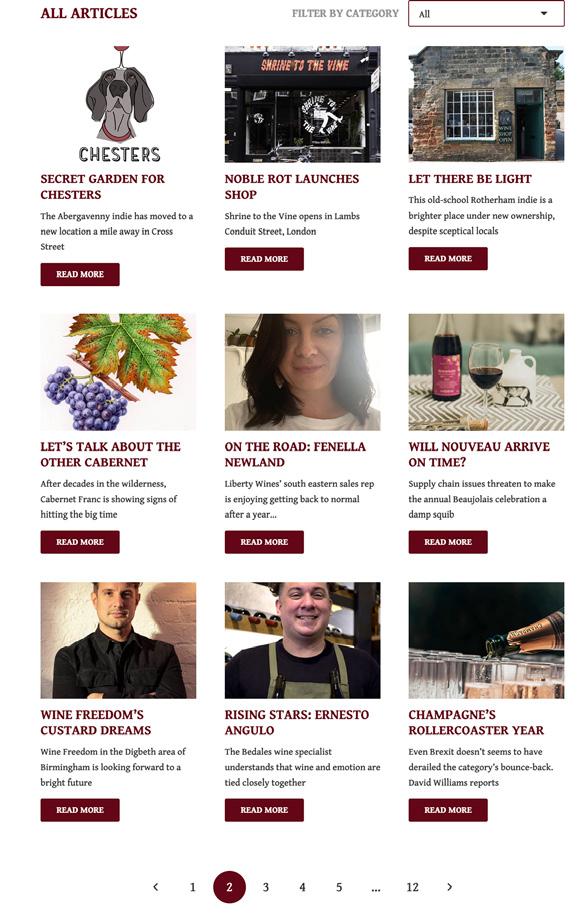
customers we could do without
You think it’s harmless fun. But taking berries without permission threatens the livelihood of the grower. Enjoy your vineyard tour. But expect prosecution if you’re caught red-handed.
 ISSUED BY THE WINE MARKETING BOARD
ISSUED BY THE WINE MARKETING BOARD
Well you keep reading about a cost-of-living crisis and a recession and what have you but nobody I know seems to be struggling … far from it … I mean we’ve seen our energy bills go up a bit but we got a very good price for the cottage in Cornwall, and the dividends thankfully keep rolling in from the investments and whatnot, so we’ve barely noticed … plus there’s obviously no more nursing home fees for Cathy’s mum now she’s popped her clogs and a nice little inheritance will be on its way if the solicitor gets her act together … people moan about having no money but what happened to saving for a rainy day rather than maxing out the overdraft and credit cards?
Most sensible people have still got plenty of disposable income, not just for the basics but the niceties of life too … talking of which, I’ll go for a couple of bottles of that Chilean Syrah please … very pleasant indeed … sorry, did you say seventeen pounds?

Actually I think I’ll just take the one … in fact that bottle next to it, the twelve quid one … that’s it ...
•
•
•
•
•
•
•
Congratulations to the five Wine Merchant reader survey respondents whose names were drawn at random and who each win a Coravin, courtesy of our partner Hatch Mansfield.
Can you unscramble these wine accessories? If so, you win a tired witticism for your A-board

Peter Fawcett, Field & Fawcett, York
1. Finite Rewards
2. Strong Pots
Anthony Borges, The Wine Centre, Great Horkesley, Essex
3. No Vicar
4. Memo Rewritten, Eh?
5. Creole Wino
Zoran Ristanovic, City Wine Collection, London
Daniel Grigg , Museum Wines, Dorset
Riaz Syed, Stonewines, London
It is much, much better than the old one.
a base Object that comprises the data associated with the message. That Object contains data in one of the base JSON types (String, Number, Boolean).”
To which I can only respond with a fourletter word. Namely, “what?”
As we know, grapevines are canaries in the coalmine. They’re sensitive creatures that only thrive in a narrow temperature range, and with just enough water at their roots. Too little and they wither, too much and they rot.
Every winemaker I’ve met has been extremely environmentally conscious. We’ve all seen wineries’ wastewater recycling systems, wind and solar power generation, lightweight bottles overtaking heavyweights, insecticide replaced by sexually-confusing pheromones.
Everyone in the wine supply chain is supportive of the winemakers’ efforts, and we all do what we can in our own area. For example, to pick just one of our suppliers at random: Liberty Wines is a Carbon Neutral Plus organisation, offsetting more emissions than it generates; its transport and distribution are carbon neutral; 100% of its waste is recycled or used for electricity generation, and 100% of its electricity comes from renewable sources.
You’d think, with all this enthusiasm for a greener business model, the wine trade would be keen on the Deposit Return
Scheme about to be being launched by the Scottish government. In fact, the opposite is the case. I haven’t met a single producer, importer, distributor or retailer who thinks it is fit for purpose.
It’s incredibly complicated. Several national organisations must be engaged with: Zero Waste Scotland, the Scottish Environment Protection Agency, Circularity Scotland and Biffa. Circularity Scotland alone offers 44 documents to read and act on. Some, like Interface Design & Specification RVMs and Counting Centres, are a mere 16 pages long. Others, like Explaining the Producer Fee, Charges and Invoicing, are 60 pages.
Not all documents will pertain to a shop like mine, but which are and which aren’t relevant is impossible to know without reading them. That’s about 1,000 pages in total, which is not a morning’s work for any of us. More like a month’s work for a team of corporate lawyers.
Matters are not helped by the fact that so much of the text is like this: “The data format tables in the body of the document are compliant with this by describing
I’m torn between the wish to understand the rules and act responsibly, and the impossibility of knowing what that entails. Especially when the paperwork is peppered with phrases like “please note that once you start the application, you will no longer be able to go back”. It’s Kafkaesque: the regulations are impossible to understand, yet you’re fined or excluded if you don’t follow them exactly.
In October 2019, with about 20 other Orkney businesses, I attended a presentation by Zero Waste Scotland in a local hotel. With, I think, one exception, we all welcomed the idea of a deposit scheme in principle. But we immediately identified many problems with the scheme in general, and specifically with its implementation in rural or island areas.
We were assured by Zero Waste that all our concerns would be noted and answered in full before the scheme went live. Now, with that date just weeks away for producers – which, under the scheme, encompasses manufacturers, own-branders and occasional importers like me – I’m still unaware of how the scheme is going to work in many respects. So, I suspect, are its organisers. When the scheme rolls out to retailers in August it will get even more complicated and confusing.
The Scottish government should be pushing at an open door. A scheme that had been properly consulted on, clearly drafted, and effectively communicated, would have had a good chance of gaining the support of the whole industry. Instead, they are receiving almost universal pushback.
The launch of the Deposit Return Scheme needs to be delayed until it’s fit for purpose. At that point – and only then – I will support it wholeheartedly.
Duncan McLean is proprietor of Kirkness & Gorie, Kirkwall
The documents are about 1,000 pages in total, more like a month’s work for a team of corporate lawyers
John Kernaghan at Liquorice was quick to see the potential of Lisa Chisholm, who was a regular customer before joining the business 18 months ago.
“Lisa came on board mainly on the deli side of the business,” John explains. “But I soon latched on to the fact that her main passion is on the wine side. So last year we arranged for her and two other members of the team to do WSET Level 2, in which she achieved a distinction.
“She’s got a very astute palate. We can go our separate ways at a tasting then meet up and I know she’ll go, ‘oh my goodness, you should try this’. We’ve progressed to the point now where I involve her in ideas and decisions because she is quite creative and is always suggesting different angles and ways of approaching things like events.
“We recently ran a blues evening in store, with food, wine and whisky all linked in, and that was fundamentally her idea that she saw through to fruition. She’s got a really nice manner as well as showing initiative and confidence.”
Even though Lisa had been regularly attending wine courses run by the LEA, she says her career change from the finance industry was more happy coincidence than long-term strategy.

“I enjoyed wine just from a purely social perspective,” she says, “and then I went along to a course with my parents. It was very, very basic, literally an introduction to wine, but then it progressed to intermediate and then advanced. There was no accreditation; I wasn’t doing it with a new career in mind, it was just pure enjoyment. It was run by a gentleman called Colin Legg; he really was a wonderful and inspirational tutor.
“It wasn’t until having my children and looking for something to do that this opportunity came along. As a customer of Liquorice with my friends, I just got chatting to John who said they were looking for someone to help out with the cheese room.
“As time has gone on, I’ve got involved in both sides of the business. It’s been a great opportunity and learning curve for me. The WSET course gave me that little bit of extra confidence to be able to talk to the customers. It was strange going back to school after all these years
Lisa Chisholm Liquorice, Shenfield, Essexand learning again, and revising, but I really enjoyed the process.”
Lisa continues to flex her people skills as she runs instore tasting events and engages with customers on a daily basis in order to make sure their shopping experience is tip-top.
She says: “When a customer comes into the shop and they’re looking for a gift or they want something special … trying to match the customer with the right bottle of wine for them … I love that process. Especially when they come back and say, ‘oh, I loved it, thank you’, it’s a real sense of achievement and I enjoy exceeding the customers’ expectations.
“There’s so much to learn and I’d really like to continue my educational journey and do WSET Level 3 in September. It’s about getting that balance, though – you don’t want to bombard people with information about soil types and things if all they really want is a nice bottle of red to go with their lamb. You have to know your audience.”

If you’d like to nominate a Rising Star, email claire@winemerchantmag.com


Zahel specialises in Vienna’s traditional Gemischter Satz field blend, ageing a small proportion of each vintage –in this case mainly Grüner Veltliner and Riesling – in a single amphora. It’s mesmerisingly exotic, with aromas that suggest a north African soukh rather than the home of the Habsburgs. Crazily good wine.

RRP: £29.95 ABV: 13.5%
Third Floor Wines (0161 908 1391) thirdfloorwines.com



Torres is producing a host of Chilean wines that arrive on shelves at very attractive prices. It’s safe to assume that cash-strapped consumers will continue to demand their Sauvignon hit, and here they’ll find a solution that’s authentically zippy and herbal, but with an assured mellow character, too, that broadens the appeal.

RRP: £11.50 ABV: 13%
Fells (01442 866592) fells.co.uk
Derek Mossman Knapp and Pilar Miranda’s sure touch with Chile’s neglected vineyards has earned them a following that is now way beyond what might be described as cult. Here they’ve crafted a grippy, inky yet rather gentle cherry-infused wine, reminiscent of Beaujolais but very much its own wild thing.
RRP: £17.95 ABV: 13%
Jascots (020 8965 2000) jascots.co.uk
It doesn’t take a brilliant vintage for Vidal-Fleury to produce superb wines, but in 2020 nature provided all the ingredients for something extra special. The trick, as always, is to pack in layer upon layer of violet, garrigue and dark berry flavours, plus some savoury spice, and somehow make it all feel effortlessly fresh and unforced.
RRP: £27 ABV: 14.5%
Louis Latour Agencies (020 7409 7276) louislatour.co.uk
If there’s a person alive who doesn’t smile after their first sip of txakoli – especially one as “fruity, happy and fresh” as this one, in the words of its creators – they should be bundled into a van and taken to a facility so that they can be studied by government scientists. Extra marks for the moreish saline note.
RRP: £13.99 ABV: 11%
Winetraders (01993 882440) winetradersuk.co.uk

Old bush-vine Viura grown on the slopes of the Montes Obarenes, near Haro, is the star of the show, supported by a 25% Tempranillo Blanco component. Most of the fermentation and ageing is done in new French oak, but some of the wine matures in concrete egg. A creamy, complex and confident wine.
RRP: £44.99 ABV: 13%
Boutinot (0161 908 1300) boutinot.com
An arbitrary choice, as every Riesling on show from this renowned third-generation VDP producer at the recent Top Selection tasting was exquisite. Wildfermented old-vine fruit from the banks of the Mosel and Saar is encouraged to express its pure, ripe character, breezy herbiness and natural minerality.
RRP: £32 ABV: 11%
Top Selection (0845 410 3255)
topselection.co.uk

Exciting stuff is happening at Boris Covac’s Vallée des Aigles project in the Roussillon hills, where he has a wealth of old vines at his disposal. Here the blend is Grenache, Syrah and Carignan, fermented and aged in barrel, which he melds expertly to create a perfumed, silky wine, with notes of raspberries and herbs.
RRP: £16.50 ABV: 14.5%
Ucopia World Wines (01435 517080)
ucopiawines.co.uk




New Zealand wine producers in Hawke’s Bay and Gisborne face power cuts and water shortages as they begin the 2023 harvest in the cyclone-ravaged regions.
Cyclone Gabrielle ripped through North Island in early February. Eleven people were killed, dozens more were injured and around 10,000 were left homeless, according to early estimates.
Hugo Meyer Esquerre Provisions, Hackney
At the moment I’m really enjoying the Mas des Agrunelles Indigène. It’s one of our best sellers, a warming blend of Syrah, Grenache and Carignan from high up in the hills of Terrasses du Larzac. It has amazing complexity, deep and profound with notes of bruised strawberries, rose petals and an incredibly smooth finish.
You can’t go wrong with the classics. I love an old Vin Jaune with a salty hard cheese. Comté is an obvious match and with good reason, but Gruyère or Parmesan work equally well.
The road from Vallée de L’Agly in Roussillon up to Corbières is pretty spectacular, winding through the impressive limestone mountains. I’m lucky to make this trip often as many of our producers are around here.
Even though he can be very opinionated at times, it’s always a pleasure to catch up with Raphael Rodriguez from Vine Trail.
In London I’m really enjoying Antidote and Hector’s. Both have a very well curated selection and I always find something I want to drink on their shelves.
Some of Chile’s oldest vineyards in the Ñuble and Bío Bío regions within the Itata Valley are being destroyed by wildfires.
Hawke’s Bay and Gisborne are the country’s second and third largest wine producing regions respectively, yielding a combined 60,000 tonnes in 2022 and accounting for 12% of the vintage.
Decanter, February 21
South Korea is reaching beyond its borders to purchase wineries in order to keep up with consumer demand for imported wines.
In 2022, the country’s imported wine sector was worth US$581.2m, an increase of 3.8% on the previous year.
Napa’s Shafer Vineyards has been purchased by the Shinsegae Group for a reported US$250m and Seven Stones winery in Napa Valley has been acquired by Hanwha Group for US$34m. South Korea’s leading retail giant, Lotte, is also looking to buy domestic and foreign wineries in an effort to grow its wine business.

Vino Joy News, February 22
“The consequences have been terrible,” said Eduardo Jordán Villalobos of Miguel Torres. “Many acres of forests burned, and this time, unlike the 2017 fires, I have seen a greater number of vineyards, houses and even wine cellars [burn].
“We have 10 acres of País vineyards over 150 years old that we managed to save an important portion of, thanks to the fire walls we had made.”
Southern Chile has experienced heat, gusty winds and low rainfall. Wine Spectator, February 23
When brewer Francis Showering invented a sparkling perry 70 years ago, it was dubbed “baby champ” by farmers because it kept winning awards at agricultural shows.
The grandchildren of Showering, now owners of the Babycham brand, plan to make it popular again by returning to the original recipe. Production has resumed in Shepton Mallet, Somerset.
Matthew Showering, the 14th generation of his family to work in the drinks business, said: “If you were to put a Babycham and a Prosecco or even a Champagne side by side, there are an awful lot of people who would prefer the Babycham, because it hasn’t got that dry rasp.”
The Times, February 28
Villagers in Cramant in Champagne are being treated to a rare sight: little pigs grubbing around the vines.

Originally from New Zealand, the Kunekune pigs, a Maori word meaning round and fat, offer an eco-friendly alternative to chemicals.
Their “thorough” and “precise” work can fight weeds as well as mildew and other fungi and aerate the soil, says wine industry consultant Olivier Zebic.
The pigs gobble up leaves that have fallen to the ground, preventing fungi from taking hold. They cannot lift their heads high enough to attack the vines’ leaves and branches and they avoid eating earthworms.
France 24, February 24
No worms, please, I’m a Kunekune
Frenchman Nicolas Prevost has established a vineyard in the hills of Powys.

Having decided to learn how to run a vineyard during lockdown and taking an online course, he said: “I think I need to have a go at it. I’m French, I love wine.”
Nicolas believes that Le Prevost Vineyard in Trallong could be the highest vineyard in the UK at 260 metres above sea level. Brecon & Radnor Express, February 4
�Coca-Cola is the biggest selling beverage in the world. With 38g of sugar per 33cl can there’s no mistaking that the global preference is for a sweet tasting drink. Does this translate into wine preference? For the most part in our retail business the answer is no. But the ‘sweet spot’ is certainly trending towards a CocaCola drinkers’ taste profile: cheap Sav Blanc sweetened up to disguise the low quality, and those frightfully sweet southern Italian reds in bottles best used for self-defence.”
Daniel Grigg Museum Wines, Blandford Forum�People always say they want a dry white wine but I find that with red wine, people are more flexible. Wines with residual sugar probably by necessity are higher in sulphur and possibly have been sterile filtered, which is a choice, but I personally wouldn’t want to drink them. For me the question is, do people secretly prefer aromatic wines?”

Kirsty Tinkler
Weino BIB, east London
�A lot of customers come in asking for a dry white or a dry red. Once you get talking to them, you can normally gauge that they don’t really want a dry wine, it’s just the word ‘dry’ is used to avoid dessert wines. Recently a customer came in asking for a dry fruity red. I recommended a Primitivo from Puglia, explaining that it was not dry, but full of ripe fruit flavours. He returned the next day for a second bottle.”


�Often customers who say they love bone dry wines aren't necessarily seeking a lack of residual sugar but are looking for high acidity, particularly with whites. Most who rave about dry whites like Marlborough Sauvignon or Chablis also say they love modern Pfalz Rieslings, which are drier than they have ever been, but still offer some residual sugar. When asked what it is they like, they say it’s the clean, crisp freshness – something I associate more with acidity than zero sugar. Customers from Asia and America are always after very sweet reds, almost to the degree that it is hard to find wines sweet enough.”
Angus Perkins, Wolf Wine, Bath H Champagne winner H
Champagne Gosset

The oldest wine house in Champagne: Äy 1584
 Jon Moore Mumbles Fine Wine, Swansea
Jon Moore Mumbles Fine Wine, Swansea
In a nutshell:
As an artist Emma is keen to invite her customers to share her love of life drawing. Fortified with a glass of wine and a thoughtfully curated play list, guests are let loose with paints and charcoals to get creative.

Some might say this was a brave move. “I didn’t know what was going to happen when I introduced life drawing to Wandering Palate. I said to Will, ‘is it too much for Monton?’ We’re not the city centre of Manchester where it’s a little bit more bohemian, so I wasn’t sure how drawing a naked person would be received. But from the first session it’s always been a really full class and it just makes me so happy that there is this appetite for creativity and trying something different.”
What’s the typical reaction?
“What’s lovely is when people come to the sessions a little bit nervous – sometimes they say they’ve not drawn since school – and then when they leave they’re absolutely on a high and asking when the next session is. It’s not about how well you can draw: the main reason I wanted to launch it was because I’ve always found life drawing meditative. You could have had a really bad day, lots going on, but this is a good way to relax.
“There are some regulars and there are always new faces. Recently I had three ladies who have this pact where they’re
Bottoms up: two happy customers
always trying something different together. They enjoyed it so much, and they gave me a hug when they left. Making people feel good and encouraging them to try something new … that’s what I wanted when I started this.”
Guide us through the basics.
“Each session is different, with new playlists, wine menus and models. A lot of the models we use have been on Drawers Off: The Big Naked Painting Challenge on Channel 4.
“At the beginning of the class I do a warm-up, which helps stop any procrastination.
“We’ll do a pose for a minute and then two minutes and three minutes. We also do a moving pose where the model moves
really slowly to the sound of the music.

“As part of the warm-up I invite everyone to use different materials like charcoal, pastels, chunky markers, textured and coloured papers. It gives people a chance to play around a little bit and find out what they enjoy working with.
“Once we get on to the longer poses, it feels very meditative. There’s something about life drawing; it’s that human connection. We have a short break in the middle and when we finish, people hang around, have a drink at the bar and catch up with friends.”
Let’s talk numbers.
“We can fit in a maximum of 24 people. We charge them £16 a head, they get a glass of wine on arrival and we provide all the materials. The models charge £40 for the session.
“We hold the classes in the room upstairs, which we wanted to have a speakeasy feel. The work on the walls is from an exhibition I did with six Manchester poets last year and is available to buy.”
This feels like a very personal addition to your business.
“Will and I don’t see our shop as work, but as a lifestyle. That was the whole concept behind Wandering Palate. The name reflects our love of travel and is a play on my paint palette as well as our taste buds. It embodies everything we love.”
Emma wins a WBC gift box containing some premium drinks and a box of chocolates.

Tell us about a bright idea that’s worked for you and you too could win a prize.
Email claire@winemerchantmag.com

We had a record response to this year’s survey. Thanks to every independent wine merchant who took part.
Over the next 12 pages, we present the first instalment of the 2023 analysis. The picture that emerges is of a trade that has certainly been spooked by events well beyond its control, but is approaching the challenges of the coming year with characteristic resilience, confidence and creativity.
We will publish the second tranche of this year’s analysis in our April edition.
Survey partnerPessimism hits a new high, but most independents still see positives to cling to in the coming year
The proportion of independents who say they are very optimistic about the year ahead has halved since last year. At just 12%, it’s the lowest figure we have recorded in the history of the survey.
It follows that pessimism has hit record levels, as the graph below illustrates.
With the gloomy economic outlook, war in Ukraine and the lingering effects of Covid disruption all conspiring to complicate life for small businesses, it’s no surprise that merchants are expressing these sentiments.
But looking at the figures another way, just over half of respondents remain upbeat about their prospects in the coming 12 months, compared to just 15% who are pessimistic. About a third are somewhere in the middle.
As the chart opposite reveals, almost four in 10 indies say sales are higher than a year ago, with a roughly similar proportion saying sales are lower.
“We are expecting to see retail sales decline over the next 12 months as the cost-of-living crisis, combined with our increased costs, makes it a very tough trading time. We hope to counter this with increased online and delivered sales driven by investment in online and social media advertising, along with increasing our wholesale operation in the local area.”
Tom Jones, The Whalley Wine Shop, Lancashire“The next 12 months will be tough, with rising costs and customers being careful about their spending. We are in a recession and this will get worse as the year progresses. Also many indie retailers have had to stop importing due to Brexit and rising costs of shipping and we’re no longer able to claim VAT back on duty for imports.”
Abbi Moreno, Flora Fine Wines, west London“It will be a hard year. Choosing the right wines at the right price is going to be crucial.”
David Smith, Portland Wine Cellars, Southport“It will be another challenging year ahead and year-on-year growth will be tough to achieve. A year to consolidate and steer through the choppy waters to hopefully blue skies towards the end of the year.”
Mark Wrigglesworth, The Good Wine Shop, west London
“Our market is polarising massively. At Christmas we saw a boom in areas such as regional France and South Africa that offered better value at the lower end of the market. On the other hand, we have never sold as many bottles in the £100+ category and that seems to see no sign of slowing down. People seem to be upgrading or downgrading, with the middle ground taking the hit.”
Rupert Pritchett, Taurus Wines, Surrey Hills
“I suspect the coming year will be challenging. There’s still the shadow of looming duty tiers which will drastically increase the price points of many of our wines. I think our customers will remain loyal but perhaps be a little more selective about their wine budget and consumption.”
Nichola Roe, Wine Therapy, Isle of Wight
“In recent years, external factors have had a huge impact on sales and margins, both positively and negatively. Forecasting sales has become a bit moot. Keeping on top of costs and having some workforce flexibility have become more important.”
Based on 215 responses
Liam Plowman, Wild & Lees, south London
You can still get the wines you want –if you plan ahead, argue some merchants

“We’ve just opened a new wine shop in Tunbridge Wells, so despite what we see as a very poor economic outlook, having a big new shop our turnover had better increase!”
Paul Adams, Paul Adams Fine Wines, East Sussex
“Sales will increase for two main reasons. The RRP of the product has increased, thus the net figure for the same number of bottles will increase. But, more importantly, the thirst for eclectic wines in retail is on the up. I think the drop-off will be in generic styles of wine which the multiple sector majors on, but outside the box the market is buoyant..”
John Chapman, The Oxford Wine Company“We have to believe that we can continue to grow as a business. I have no doubt that it’ll be a difficult year but we are a year more experienced than we were this time last year.”
Charlie Jones, Native Vine, Bristol
“After a terrible 2022, 2023 has to be better!”
Ed Perfect, Grape & Grain, Haywards Heath
“The challenges we have faced since the pandemic have made our business much healthier in the long term. Our processes have been refined and made as efficient as possible. These efficiencies will pay dividends as we look to grow our online business further.”
Tom Hemmingway, Highbury Vintners, north London
“Several indies opened their doors around the time of the last recession as two of the big national chains disappeared. They have weathered many a storm and those that are located in places that suit other indie businesses as well may prove to be as resilient during the current climate. I’m fairly optimistic for retail growth in 2023 as long as fixed costs can be kept under control.”
Paul Auty, Ake & Humphris, Harrogate
“Instead of dining out, we’re hoping people might compromise, eat at home and be more inclined to buy a quality bottle or two of wine from us.”
Tim Gardner, Gardner & Beedle, Tisbury, Wiltshire
“We will be using the various wine promotions such as New Zealand wine week, Rioja month, Riesling month etc to help the sales of these regions/countries. We’re still not getting full footfall back but our tasting events have been well supported and it’s good to see new faces.”
Hampshire merchant
“2022 was an amazing year for us and exceeded our expectations in all areas of the business. Despite the gloomy outlook portrayed in the media etc, I am confident we can continue to grow.”
Bob McDonald, Salut Wines, Manchester
Walk-in sales now make up just 52% of indies’ revenue. So where is the rest coming from?
Walk-in trade once again accounts for the majority of indies’ sales – but only just. This year’s figure of 51.7% is up from 49.9% last time, but it’s significantly down on what we came to expect in the time before Covid.
In our January 2020 survey – which can be considered a snapshot of 2019 – around 60% of revenue came from take-home sales from shops, a broadly similar figure to what was reported in the 2019 survey.
So what might account for the relative decline? Drink-in sales have bounced back to 12.4% of revenue, an almost identical figure to what we saw immediately before the pandemic.
Wholesale trade has seen a similar recovery. Despite nervousness about the immediate prospects for the on-trade, indies on average obtain almost 16% of their turnover from wholesaling, just as they were doing immediately before Covid caused mayhem for pubs and restaurants in 2020.
Local deliveries, which our survey didn’t even measure before the pandemic, now account for a respectable 6.4% of turnover. That’s obviously a long way off the Covid high point of 23.5%, but it may suggest that at least some of the customers who discovered their local wine shops in 2020 have stuck around.
We measure such revenue separately
from online sales, even though there is clearly some blurring of the lines. It’s no surprise to see this year’s figure for web sales well down on its equivalent in the 2022 and 2021 surveys, but a more useful comparison may be with the figures from our 2020 survey.
At that time, indies were obtaining just 5% of their revenue from e-commerce, an under-performance that had been one of the most striking features of our survey since its inception more than a decade ago.
Now the figure for online sales stands at 8.5%, reflecting not just changing consumer habits but a much more professional approach to the online channel from many independents.
You can still get the wines you want –if you plan ahead, argue some merchants
For several months now, it’s been a familiar refrain among independents: bottle spend is going up, but overall spend is going down.
It’s borne out in our survey data, with average bottle prices rising by 60p, to £15.70, compared to the market average of £6.35 (a figure based almost entirely on supermarket sales data). Basket spend in the independent trade fell by 41p, to £52.20.
It may be that most merchants would be happy to settle for that, if this is as bad as things get. Our survey questions were posed in January, after a turbulent year,
but one in which recession was avoided, and many consumers seemed to have more money to spend than had been feared. The coming 12 months may present new challenges.
The freeze on duty in 2022-23 was welcome, but there have been other inflationary pressures on wine, connected to rising costs of transportation and dry
goods, and in some cases weather-related volume shortfalls.
Not all of these increases are necessarily passed on to retailers, and in turn to their customers. And merchants are showing no sign of allowing such increases to eat into their margins which – as our graph illustrates only too vividly – have been holding firm for several years.
It’s no surprise to see wine dominating the indie sales mix. This year’s figure of 74% is very slightly ahead of last year’s figure, but broadly in line with what the survey has reported in recent years.

Spirits have fallen below the 10% mark for the first time, down from 11.7% in the 2022 survey. It’s unclear whether this is just a statistical blip, or a sign of the gin bubble bursting, or the beginning of a more general trend.
Beer, which we normally expect to see around 8%, is down to 7.2%, while cider, soft drinks and hot drinks bump along at similar levels to those we usually report.
Food items are nearing the 6% mark, continuing an upward curve that reflects the sector’s increased interest in deli products and premium confectionery.
Average price is now £15.70 for a bottle of wine from an indie
Not only has Boutinot claimed first place in the popularity poll for the 10th year in a row, the proportion of merchants nominating it as a favourite supplier (out of 147 names put forward) has risen and the gap between first and second has widened.
It’s a remarkable achievement, and one that reflects Boutinot’s lack of complacency in the independent trade. Its kinship with its customers is evident, both in terms of the breadth of its range and the support provided by the sales team.
Just as impressive is the performance of Marta Vine, whose vote tally almost doubled this year, sending the business into fourth place. Vindependents also continues its recent upward curve in the voting, and breaks into this year’s top 10.

given equal weighting
Little has changed in this section of the survey since 2022, though it’s encouraging to see indies reporting slightly increased satisfaction with suppliers.
78% are upbeat about the support they receive, up from 77% last time, a figure bettered only in 2021 (79%). The proportion of respondents with positive things to say about reps has risen from 77% to 81%.
Slightly fewer indies (39% compared to 42% last time) are likely to be in the market for new suppliers this year.
The sense that suppliers prioritise on-trade clients is waning, with just 26% saying there’s some truth to this, versus 39% last year.
Most indies are generally happy with their suppliers. But inevitably there are some frustrations …

“It seems to have been forgotten that we took the sought-after wines on and sold them during lockdown. We’ve not been allocated any stock now as ontrade takes precedence, it seems.”
West London merchant
“It seems some suppliers are being guided to prioritise the on-trade. I am told this is because producers want to see their wines on prestigious restaurant lists. This reduces availability for the independent sector.”
Shane Slater, Sheldon’s Wine Cellars, Shipston-on-Stour


“The vast majority of reps apply zero intelligence or preparation for meetings and very few take time to understand our business.”
Cheshire merchant
“The same old story: the same two or three are excellent, the rest missing in action. If you haven’t visited a client 50 metres from a tube station in a year, what value are you giving your employer?”
Alex Roberts & Wayne Blomfield, Park Vintners, west London
“Suppliers should stop blaming LCB for issues. Own the relationship and work better with them and if you aren’t happy, find another way.”
South London merchant
“Suddenly we are getting emails saying ‘please check all deliveries from LCB, as we won’t be responsible for missing wine’. Somebody at our storage unit will sign off a shrink-wrapped pallet – nobody is going to stand and wait while somebody else unwraps this and checks inside every box.”
Sussex merchant
“Most suppliers are excellent, friendly and try to help. To be honest there is no point in working with someone you don’t get on with. It all depends on the account managers, but luckily in my area they are pretty good.”
Bruce Evans, Grape & Grain, Crediton
“I’m generally happy with my suppliers. However, Moët Hennessy were unable to supply stocks of Champagne and premium wines because of shortages, they said, yet allocations of these same products appeared miraculously elsewhere, including in the Majestic up the road! I feel very let down, not least because they clearly didn’t care one way or the other.”
Anthony Borges, The Wine Centre, Great Horkesley
“We have mostly moved away from suppliers that are not indie-focused. It is frustrating to see wines on our shelves selling in multiples or online at much lower prices. Some of the supplier portfolios are also beginning to stagnate, which is making us look elsewhere to continually offer our customers different wines.”
Nottinghamshire merchant
“We generally have a policy of avoiding suppliers who have on-trade clients. It inevitably becomes an issue if you pursue wholesale, and frankly there are enough off-trade specialists out there.”
Stefan Botfield, The Wine Cellar, Woburn
“Most suppliers are a real pleasure to work with. With those that are a bit trickier, it’s usually down to communication. With some suppliers, we don’t really hear from our reps, orders go into a black hole and we hear nothing back until the delivery arrives with half the order missing and no explanation given. But I must stress, most are great.”
Liam Plowman, Wild & Lees, south London
“We picked up a few large corporate orders in the run-up to Christmas. We had to order more stock, and the numbers were large. Some of the smaller guys were really generous and worked with us. Some of the bigger suppliers wanted us to remain at our credit limit (some to the penny) despite many years of trading with them. It meant we had to pay large amounts upfront to get the stock in, and this put a real stress on our cash flow. It made it more difficult for us to push on as a business and if we continue to grow we will only work with the ones who will help us to do that.”
Mark Stephenson, Grape & Grain, Morpeth“Good, proactive reps get listings - in particular those with rolling promotions. Reps who don’t see us often enough to understand our business often miss the mark pitching products. The worst visit is an obvious box-ticking visit. Just make it a phone call and save us all some time.”
Nathaniel Carpentier, Dalling & Co, Kings Langley
Independents are engaging more enthusiastically with digital activity, according to our survey. But the way in which they’re doing so continues to evolve.

Almost three quarters of indies now have an e-commerce website, a figure that’s unchanged since last year. As we report elsewhere, 8.5% of indies’ revenue now comes from online sales. But around 30% of respondents say most of these sales are mainly to local people, up from 24% a year ago.


Almost all indies – in fact 99.5% of them – use social media in one form or another. Instagram is the clear platform of choice, with almost 81% of merchants regularly posting, compared to 76% last year. Facebook saw its share fall by a couple of percentage points this year, while Twitter sinks from 34% to 21%.






Our chart below hasn’t changed significantly since last time, except in one
respect. The proportion of indies who run online tastings has fallen from 23% to just 12% – no big surprise given that Covid restrictions are over and real-life events are back on the agenda.
The proportion of indies who sell wine from an Enomatic or similar device holds steady at 12%. We recorded levels of 15% and 16% back in 2015 and 2016, but 12% has been a typical result in recent times.
Draught wine, long tipped as a growth area for indies, shows no immediate sign of building on its early momentum, with figures remarkably similar to last time.
Twenty-eight per cent of indies sell food for consumption on the premises, unchanged from last year’s survey, while there has been a modest uplift in the number of independents running some sort of education programme.

Back in 2014, around a quarter of independents sold wine for on-premise consumption. It’s now nearer half, and had Covid not disrupted momentum, it’s entirely possible that by now most indies would be hybrids. That’s certainly where things were heading before the first lockdown.
Our survey found that just under 5% of indies will “definitely” start offering on-premise drinking in the coming year, with 9% saying they’re still weighing up such a move.
Just over 2% of those already operating as hybrid bars and shops are considering retrenching into pure retailing. But none say this is a definite plan.
“Serving wines by the glass, and bottle, enables us to encourage customers to experiment outside their comfort zone, often resulting in a sale of that product. It also helps the bottom line as the margin is much healthier.”
Jane Cuthbertson, Barrica in the Park, Chorley
“We introduced a tasting lounge this year. We have a targeted and unique by-the-glass list which changes on a four-weekly basis. This has driven incremental by-the-bottle sales.”
Ray Nicholls, Ripponden Wine Co, North Yorkshire
“We think hybrid stores are incredibly tricky to get right and not end up compromising either the on or offtrade. This is why we have decided to open our own bar.”
Graeme Woodward, Grape Minds, Oxfordshire“We need our bar sales and the ticketed events we hold in the bar to make the business viable. Our outdoor seating in the summer months in particular is a major income generator.”
Kat Stead, Brigitte Bordeaux, Nottingham
“It was never in our business plan to offer drink-in on a regular basis. However in the current climate it feels like the only option to keep the business going. We have a very small area, but we hope this will allow us to reconnect with customers and will make it much easier to hold events on the premises.”
Tom Flint, Bottle & Jug Dept, Worthing“The hybrid model is vital in a small town. Without drink-in sales, we wouldn’t still be in business. Retail sales are slower, with competition from Majestic, the supermarkets and online businesses, but we don’t have much competition in our space for on-sales.”
Derek Crookes, Kernowine, Falmouth
“We have dabbled with hybrid model events and discovered that we’re all a bit long in the tooth to be running around and waiting on tables. New and younger staff would be an essential part of taking this model forward.”
North Yorkshire merchant
“We seem to become the community drop-in centre for lonely drinkers so it’s very exhausting combining on and off-sales.”
West London merchant
“We’ve configured our second store to be able to adapt to a more hybrid model later in the evening and we’ll think about implementing a trial of this with a more structured wine flight, rather than a pick-a-bottle-off-theshelf approach, perhaps later in the year.”
Jefferson Boss, StarmoreBoss, Sheffield
“We had plans to open the drink-in facility in 2022. However, we really struggled to find reliable staff to make this viable.”
Wiltshire merchant
“We sell a range of wines by the glass, mostly on tap, which allows us to reduce our environmental impact as well as our wastage. This also helps to keep prices down while maintaining a very good margin. We also like to open something different from our retail shelves throughout the week. Not only is this useful at converting to bottle sales, but it allows the staff to try something new and learn about the different styles we have available.”
Holly Willcocks, Half Cut Market, north LondonFirst, a disclaimer. If we treated France as a single entity, rather than a collection of separate regions, it would easily top both our polls. Across the independent trade as a whole, French wine is still setting the standards that others strive to emulate.

Respondents were allowed unlimited choices, all of which were given equal weighting
But it’s clear that merchants are impressed by what they’re discovering in other countries, especially Italy, which just
We’ve simplified the graph to combine respondents who described each of the three scenarios as either “very likely” or “fairly likely”.
We also asked about staff. 15% of respondents said they are very likely to take on additional employees in the coming year, with 31% saying this was fairly likely. None of our 186 respondents said that reducing staff numbers was very likely, and just 3% said it was fairly likely.
When we suggested the possibility of diversifying into new areas beyond drinks, 4% said this was very likely, while 11% said it was fairly likely.
edges Portugal off the top spot in our “most interesting” chart on the left.
Our sales chart, on the right, is unchanged at the top but, a little further down, Portugal and South Africa will be pleased to see the enthusiasm they receive from indies translating into increased sales.
It’s a different story for New Zealand, whose share of the vote has halved since last year’s survey.
Respondents were allowed up to three choices, all of which were given equal weighting
Based on 218 responses
Given the economic climate and the general challenges facing the trade, it’s no real surprise that the proportion of independent merchants who think the time is right to grow their wine range is below what we saw in the 2021 and 2022 surveys.

But the fact remains that almost six out of 10 indies are thinking about stocking more wines than they did last year, with 16% saying this scenario is very likely, and 41% describing it as fairly likely.
Only one respondent said that a range reduction was very likely, with 9% saying this was fairly likely.
Based
Clearly, there is a problem with trade tastings. Or with London. Or both. This year’s survey shows that enthusiasm for every type of trade event in the capital is melting – in some cases quite dramatically.
Just 8% of indies are “very keen” on attending generic tastings in London, down from 16% a year ago. The number expressing similar enthusiasm for singlesupplier events in the city is down from 22% to 14%. Even the proportion saying they are very keen on attending London tastings involving a group of like-minded suppliers has fallen, from 24% to 16%.
None of which necessarily means such tastings are doomed, or that they won’t see a turnaround in their fortunes if circumstances change. But independents have been expressing strident views about why they are slipping down the agenda.
“I think the problem with trade tastings now is the sheer cost of getting to London, especially when we are taking the team down,” says Phil Innes of Loki Wines in Birmingham.
“We have also experienced unreliable train services over the past year, which has also hindered travel.
“Unfortunately, these days the London Wine Fair doesn’t achieve what it used to.
“I find regional tastings are generally not as good as London tastings as the number of products on show tends to be limited. I think there needs to be a big rethink regarding how tastings are working, as it is getting more difficult for regional merchants to source wines.”
Ray Nicholls of Ripponden Wine Co in North Yorkshire is blunt. “I make an absolute point of not attending any
tastings in London,” he says. “The cost involved, coupled with the loss of two days’ trade, makes these completely out of the question. I have never, and will never, attend a London tasting.”
Sarah Truman of Sarah’s Wines is based in Battle, East Sussex. London isn’t so far away, but getting there is still a stretch. “With no employees, a trade tasting means that my shop is closed for the day,” she says. “Although I love tasting wines, meeting others in the industry and discovering new wines for the shop, I just cannot justify the closure and the expense of a journey into London.”
Bob McDonald of Salut Wines in Manchester says it’s not just the time and expense of getting to London that are considerations. “Tastings are not always beneficial,” he says. “For example, you may go to a portfolio tasting of a few hundred
wines but only a handful are relevant to your business. We find account managers coming to us with a much more focused selection is far more beneficial.”
Andrew Kinnersley of The Grape & The Good in Wells, Somerset, says: “I’ve really slimmed down the number of London tastings I go to. If the supplier in question is supportive throughout the year, then I’ll make an effort. But to not visit or offer any support, and then expect me to make the trip to London with the expense involved, appeals less each year.”
So if London tastings are losing their lustre, how do merchants prefer to taste and discover wines?
“Our preference is always to taste in the shop, with staff, and with our customers,” says Anthony Borges of The Wine Centre in Great Horkesley. “It is no coincidence
that we sell most wine from those suppliers who are most generous with samples. Single-supplier tastings in London can be useful, but we limit these to three of us, three times a year, because it’s time away from the shop.”
George Unwin of Baythorne Wines in Essex says: “Given the relatively small size of our company, and our location some distance from major transport links, it is quite an undertaking getting to trade tastings, both in terms of time and cost.
“Almost all our buying decisions are made at our office, with samples provided by suppliers.”
Andrea Viera runs Last Drop Wines in west London. For her, “time is of the essence” and she’s looking for the most efficient way of exploring new wines. “I think there is a greater chance of the wine getting stocked if the sales rep thinks carefully, selects a few wines and sends or brings them in,” she says.
Fewer indies are running Zoom tastings for their own customers, but around four
in 10 respondents say they remain keen on attending such events themselves, involving individual producers.
“Even after lockdown, the online Zoom tastings are very successful,” says Joe Hukin of Penistone Wine Cellars. “I can manage my business while tasting a range of different wines.”
Amid the negativity, there remains an affection for old-school tastings that might not be revealed by a first glance at the data.
More than half of independents remain “very keen” or “fairly keen” on single or multi-supplier tastings in London (even if enthusiasm for tastings outside the capital registers slightly higher).

Generic tastings retain the support of 50% of indies, with a further 31% expressing ambivalence – suggesting they could be tempted to attend if the offer is compelling enough.
Mark Stephenson of Grape & Grain in Morpeth is one of several merchants
who would probably attend more events if travel was less problematic. He says: “I am delighted to see the return of our suppliers’ tastings post-Covid. Our main issue has been getting to them! Every time you book a train it is a gamble with the ongoing rail strikes.
“Travel across country to places like Manchester is still an arduous trip from here and involves a very early alarm or an overnight stay. Leeds and Edinburgh are a lot more accessible for us in the north east. The crazy thing is it is probably easier (and cheaper) to fly to southern based tastings in London and Bristol.”
Derek Crookes of Kernowine in Falmouth says: “I know some don’t agree with me, but I think in-person trade tastings are vital to my business.
“I regularly find new gems for the portfolio and it’s a great way to meet and stay in touch with suppliers and winemakers, especially for added-value items such as classes and ticketed tastings in our shop.”
There’s a sense that it’s slipping down the food and drink rankings. But don’t believe everything you read about the decline of French gastronomy and wine culture, says David Williams

The ASI Best Sommelier of the World competition is one of those events that must look completely bizarre to an outsider. It looks a little strange even to those people who, like me, work in a slightly different corner of the wine world. Watching the footage on YouTube, you could be forgiven for asking how something so apparently mundane as the serving and selling of wine in a restaurant context had somehow been turned into a spectator sport.
Well, I suppose giving up an evening to watch and cheer on a group of highlydriven men and women as they precisionpour a few flutes of Champagne or conduct a blind tasting under intense pressure is no less absurd than buying tickets to see the exhibition of professional floor-cleaningon-ice that is curling. Still, the fact the triennial event managed to attract more than 4,000 people to an arena generally used for high-profile sport and music events is quite some testament to the status of wine-waiting.
Apart from the astonishingly high level of engagement, one of the curious details of this year’s competition was the feeling of thwarted expectation and angst on the part of the host country, France.
Just as the lead-up to the Tour de France in the French press is dominated by the search for the latest poor tyro expected to carry the weight of a nation’s longing for
an end to its near-40-year wait for a French winner of the national race (Bernard Hinault was the last Frenchman to win in 1985), so the hope in Paris in February was that local star sommelier Pascaline Lepeltier would become the first French world champion sommelier since Olivier Poussier in 2000.
It wasn’t to be. The four-day event, which featured 68 contestants, was ultimately won by a Latvian, Raimonds Tomsons, with Lepeltier coming in fourth after losing out in a semi-final featuring a cosmopolitan field of 17 national champion sommeliers from the likes of Norway, Taiwan, South Africa and the USA.
The long wait for a winner has inevitably been taken by some in France as yet another marker on the long, slow decline
of France’s wine and food culture – a small but telling detail to be filed alongside the slow death of the local brasserie or the fact that France is the largest market for McDonald’s outside the US, and a sign that France is no longer the centre of the gastronomic world.
It’s a contention that is hard to argue with when it comes to food alone. There’s no question that the past 50 years, and certainly the past couple of decades, have seen a progressive dilution of French authority on culinary matters. Visitors to France will be aware of the prevalence of poor-quality, uninspired, and over-priced food once you get outside the larger cities. And even fair-minded Francophiles would struggle to argue with the proposition that the increased respect and influence attained by, among others, Japanese, Spanish, Italian and Lebanese cuisine has been a hugely positive and palate-expanding development for the world’s chefs, diners and home cooks, not least in France itself.
When it comes to French wine, however, the declinist narrative, the idea that France has been progressively losing out to upstarts in new and old world alike since at least 1976 – the Judgment of Paris, and all that – is rather more difficult to sustain.
I’m not saying that French wine hasn’t had its share of problems in the past half-
The idea that France has been progressively losing out to upstarts in new and old world alike since at least 1976 – the Judgment of Paris, and all that –is difficult to sustain
century. An industry that had developed to slake the thirst of a local, and sometimes indiscriminate market that consumed something in the region of 120 litres per head per year as recently as the 1960s, has not always coped well with the changes demanded by a drop to something like 40 litres per head (and, with younger drinkers increasingly turning away from wine, counting downwards).
Life for many growers, particularly in the historic engine rooms of production in LanguedocRoussillon and the less glamorous rump of Bordeaux, is often grindingly hard and poorly rewarded. Answers to the questions posed by the new world revolution have often been neither punctual nor convincing. Meanwhile, the quality of
wine all over the world has improved, including at the level of so-called fine wine that the French have so long defined and dominated.
But there is another, no less compelling, and rather more positive parallel story to tell about French wine in 2023. This, after all, is a country that has just reported record wine and spirits exports: up 11.2% to €17.2bn in 2022.
French wines also continue to dominate the traditional world of fine wine and investment, accounting for 78 of the 100 names on Liv-ex’s Power 100 Index. But French vignerons have also played arguably the leading role in developing the natural and natural-leaning scenes that have become a kind of alternative, more affordable “new” fine wine scene, while French winemakers and companies
remain the single most influential source of outside expertise and investment all over the winemaking world, from the 25 French owners of vineyards in Napa Valley, to the work of LVMH in shaping China’s first genuinely fine wine, Ao Yun.
Even the story of a Latvian – “un letton!” – beating the French at their own game at the ASI Best Sommelier of the World is not quite the telling detail detractors of French wine might think it is. This after all is a competition that was started in France, by an organisation that was formed in France, celebrating a profession that emerged in France.
The culture of sommellerie may have long since spread around the globe, attracting adherents from Vienna to Taipei. But at its heart it remains, like so much else in the wine world, quintessentially French.

The first thing to note about York Wines is that it’s not in York. The second thing to note is that neither is it quite in the North Yorkshire village of Sheriff Hutton, 10 miles north of York, where Stuart Vass founded the business 35 years ago.
Alex Edwards, who bought York Wines from Stuart in August 2021, moved it and her team of 11 from YO60 to YO32 last November.
Despite the seemingly dramatic change of postcode, the move was actually only a mile and a half down the road, from the tiny village’s centre to Moor Farm. Where the neighbours were once the village pub, a post office and a deli, they’re now a livery stable, a cricket club and a camp site.
The original shop was essentially an extension of Stuart’s home, and for a while after handing the reins over to Alex, he was her landlord. When he served notice on the arrangement, Alex was sparked into activating ambitious plans that had been fermenting since she first joined the company in 2018.
“The original plan was that I would buy equal chunks over five years and gradually increase my involvement,” she says. “But then Covid happened and everything accelerated, which was probably good all round.”
Alex Edwards joined York Wines in 2018 and soon spotted the potential for the business to evolve beyond its existing wholesale-focused horizons.
After buying it from Stuart Vass, Alex recently relocated to a farm. It’s given her the space she needed to broaden the range and increase the retail element of her trade to something like 50%.
Alex and her family moved to rural Yorkshire from London, where she’d worked in advertising and local government.
“I had a longstanding interest in wine, socially and informally,” she says. “The first day I came up to look at the house that we ended up buying, the estate agent drove me round and said there was a wine shop.
By Nigel Huddleston“Quite quickly after we moved up I went into the shop and got to know Stuart and it went from there, really. I heard that the deli was being sold and it got me thinking that the wine shop might be an opportunity. Eventually I approached Stuart and asked him if he had any plans.”
With Stuart now retired and the relocation complete, York Wines is being reinvented in Alex’s image.
The new York Wines is approached by a freshly landscaped track from the main road that links Sheriff Hutton to the bigger village of Strensall. A farm gate opens automatically to grant access to the wine shop forecourt.
York Wines’ share of the farm complex includes a large warehouse and dedicated parking. Inside, the retail element is set in a high-ceilinged space with
natural light bursting in from a skylight, an island counter and offices that are reached via a spiral staircase. A second room houses the big French regions.
“The main criterion in looking for a new place was having a bigger retail space,” says Alex. “I always felt, from when I joined the business, that there was potential in that.”
Why buy an existing wine shop rather than start afresh?

Buying an established business had a lot of positives because of suppliers, customers and systems being in place, but on the other hand you can’t change things overnight and you have to get to know why things are done as they are.
That was quite good for me because it made me take time to consider what changes would be good to make. The move was the big thing.
How did you find the farm?
When I started looking, I explored every possible avenue I could think of. I visited all the local industrial estates and asked around as many people as I could. I knew the people who own Moor Farm through the horses and the livery yard. I spoke to the owner because she used to be a letting agent and I thought she might know somebody who had a building or a piece of land. She said, “why don’t you come and look at what we’ve got?” I was familiar with it, but really at that point I couldn’t envisage it.
What was here before?
This was a brick stable block with horses living in it. They’d got planning permission to turn it into a holiday let but said we could change the internal plan and that it could work as a wine shop. It was available and the builders were already booked to start [doing the holiday let conversion].
You obviously saw its potential. What about the design: did you bring people in to do it?
I worked with Carole Whitby, who has an interior design firm in York [Upside Down Design], and who I’ve worked with before. She came to the old shop and we talked about other places we’d been to in terms of look and feel. Carole talked about vineyards in France and little châteaux where you have a tour and come together to taste: somewhere quite friendly, inviting and warm.
I was quite clear from the outset I wanted to be able to accommodate tastings. Carole had the idea
of having the counter and till in the middle. One morning I had a call to say she was at the Newark Antiques Fair and had found the barrels to create the space at the front of the till. From those central barrels it sort of evolved.
The original idea is that the counter would be built out of empty wooden wine boxes. I gathered enough together and we built it, but it wasn’t going to be stable enough, so we’ve used them as support for some of the shelves.
What was the thinking with the island counter?
It was almost that it could act as a bar top to serve from. For a couple of events we’ve had stools there and sat at it as if it was a bar. The shelving is all birch ply that’s stained, which gives it an aged look. It was all made offsite at a shopfitter’s. I transported the bulk of the units in a horse box to save costs.
“This was a stable block with horses living it. They’d got planning permission to turn it into a holiday let but said we could change the plan and it could work as a wine shop.”Alex Edwards, Sheriff Hutton, January 2023
The old shop was a little bit Dickensian. It was small and everything was on display, but it was crammed in. It was very quirky and characterful. At first, when I was looking for a new site and visited industrial estates, the units were very functional and had great access but were just a bit soulless. Once I came here and could picture it, it meant we could keep some of the character of that side of it but create something from scratch that was purpose-built.
What has been customer reaction to the new shop?
Overwhelmingly positive. They really like the bigger space. I’d begun work about nine months before on expanding the range. At the last count there were about 200 new wines. I always felt with the retail there was an opportunity to make the range more interesting and fill any little gaps we had. People have responded to that. We’re buying more products from existing suppliers or finding new ones.
The pubs are either closing completely or restricting their hours to save costs, and I think we’re getting a knock-on from that. During Covid, people couldn’t go out and people upgraded the wines they were buying. Over the cost-of-living

crisis, people may not go out as much again, and realise what you can get by spending less in a shop than in a restaurant. Just from my back-of-envelope calculations, the shop in December played the biggest part. You assume after Covid everything’s drifting the other way.
Have you managed to hold on to old customers? We did a flyer. We gave one to anyone who came into the shop from the time we knew we were definitely moving, to get 15% off at the new shop on their first visit. We opened on November 1. It turned out to be the ideal time to move. At one point it looked like we might not move until January 1, which would have been better from a being-lessbusy point of view, but we would have missed out on the Christmas trade.
A lot of people who upgrade their wines in the run-up to Christmas visited us, so that worked really well. There was a bit of curiosity with people wanting to come and look at the new place – and then they’ve got their voucher to get a bit of discount.
Your website talks about buying more wine direct to cut out the intermediaries. Was that a steep learning curve, coming from local government?
Yes, it was, but that model was already in place. The majority of the French wines are shipped direct and a lot of the relationships are quite longstanding. The process was quite established, so I’ve just continued with that. We used to do a tiny bit of groupage but haven’t continued that after Brexit because of the cost – you get charged double for the paperwork and transport – so we only ship full pallets from individual producers.
As part of the range expansion, have you sought out new producers?
I was fortunate to be part of a trip to the Loire Valley with The Wine Merchant in 2021 and one of the producers we visited was Eric Santier in Chinon [Clos du Saut au Loup] and I went on to ship some of his wines.
We’ve also brought in a range of wines from Extremadura in Spain. They’re great and it’s not that well-known a region: it’s on the Portuguese border above the Algarve. It’s regularly 40˚C-plus through the summer and we have a fantastic producer [Evendria].
“I always felt there was an opportunity to make the range more interesting and fill any little gaps we had. People have responded to that. We’re buying more products from existing suppliers or finding new ones.”
Who are your favourite UK suppliers?
I have to say they’re all good. Richmond, Alliance … Winetraders is a relatively new supplier. New Generation, ABS, Kingsland, Hayward Bros.
Do you consciously avoid the bigger players like Boutinot and Liberty?
I’ve not consciously avoided anyone; it’s just the way it’s worked out. I’m always up for meeting suppliers. A lot do visit. Winetraders were here yesterday with a producer. I’m trying not to leave anyone out … Condor Wines; Hatch Mansfield. We’ve had a few producers from Europe coming over. A Barbera d’Asti producer came over in November.
The portfolio I inherited was predominantly French and directly imported. We do import a lot of Spanish wine that we sell, and we import a good chunk of Italy. In terms of what we sell by volume, Chile and Romania are very big. It’s a value-formoney thing.

We have wines starting at £6.50 and going right up to £200. I’ve expanded the top end. I think people do see us as a genuine alternative to the supermarkets but with the added bonus that they can chat to us.


The Yellow Room is all Burgundy and Bordeaux. It was going to be the fine wine room. There were a few articles around in the press about “what is fine wine?”. We had our own internal debate about that and what the cut-off would be. If we picked £30, would there be enough wines to go in that room? There would then be the whole thing of categorisation and maybe only having two or three from Australia or New Zealand at that price. The whole thing would really be Bordeaux and Burgundy, so in the end we just went for those regions for simplicity.
you think the “fine wine” idea is out-of-date?
A lot of people wouldn’t go in there if you called it fine wine. Apart from Bordeaux and Burgundy, all the other expensive wines are dotted around in their country sections. If you’ve got a super-Tuscan at £200 and all the other Italian reds alongside are at £20, they suddenly look like very good value. It’s very good to have that mix to contextualise for people who may only be familiar with supermarket prices. We haven’t had any complaints yet about
The central till area, which can double as a bar, was originally going to be made from old wine boxes – but stability was a problem

the way it’s ranged.
We had people coming in and saying they were splashing out for Christmas and wanted to spend £10 a bottle, and others who say they’re splashing out for Christmas and wanted to spend £50 a bottle, and I think we genuinely cater to both.
Is it because of your location that you can do that? People don’t have supermarkets to go to … or do they?
There is a Tesco in Strensall [four miles away] but if you’re from Sheriff Hutton you’d have to drive past us to get there. A lot of people have said we’re so much more handy now because the parking’s better. I hadn’t seen that as a barrier but it really was. People would also say they used to drive past and not stop because they could see someone was in the shop already. Oh my god! Wow! Fair enough, I suppose.
There was nothing I could do about it. I couldn’t create parking or a bigger shop where we were. But I’d never thought about it before.
The people who come in tend to buy at least six bottles. In London, where it’s a parking free-for-all,
you’d just stop anywhere, but here everyone has a drive, so if you go somewhere and you can’t park, it’s seen as a big no-no.
The development here includes quite a big warehouse which suggests that wholesale is quite important.
When I joined wholesale accounted for 85%-90% of the business – then Covid hit. The positive side was that it showed what I thought was possible was possible: that we could a do a lot more retail and we had the portfolio of wines to do it.

It’s levelled out at about 50-50 and retail is growing significantly. Wholesale has also grown, but just not as much.
We have a really diverse range of trade customers, from little post offices to big restaurants and bars, and farm shops. The farm shops all carried on trading during Covid and were busier than before.
We find that, as opposed to having a fixed list like a pub or bar, they are interested in having a more diverse range that offers something different to the supermarket and that mirrors their food offering as well.
You said the new place had to accommodate tastings. Has that ramped up yet?
The previous space was tiny. You could literally get one person serving and two customers in the shop. We couldn’t do those sorts of events there. I had run a few at Sheriff Hutton Castle and for other local groups, and customers used to ask if we did them. So I knew the demand was there.
We had our first Wine Wednesday in January. They are on the last Wednesday of every month between 5.30pm and 7.30pm, for £5 a ticket, or you can buy 12 tickets [for the whole year] for the price of 10.
We’ll open at least five wines, and you can come along and find out if you like them with no pressure. It’s informal, you can come with a couple of friends, try some wines you’ve never heard of, or that you would never risk buying a whole bottle of if you saw it on a menu when you were out.
We had 12 people in the shop for the first one and every single person bought something on the night. I think we’ve got half a dozen people who paid for the whole series of 12 evenings.
Is there still a big to-do list?
We’re moving to a new software system and have a new website that’s nearing completion. The old one is fine but the three bits of the business – the shop, the wholesale and online – are all totally separate on it. The new system will be centralised and hold all the stock, so if somebody buys something through the website it will update the stock across the business.
The range is still evoIving. I tasted some wines yesterday from two producers I’d never heard of. One of them has vineyards overlooking the Colosseum in Rome. There’s a white from Bellone grapes and the red was Nero Buono. You never stop learning.
Do you think your background outside of the wine world helps in the quest to make wine feel less stuffy?
It’s probably quite fair. At the old shop we had grape labels in three different colours – red, white and rosé – that went over the neck of a bottle and a rectangle that had a flag with a country, the price, the coding, dry to sweet, and then a quite lengthy description. I’ve changed that. Now we have little magnet tags that go on the shelf, not on the bottle, so the bottles are clean and clear and the
descriptions are very short and to the point. Some of them are as simple as “a real crowd pleaser” or just “fantastic”.
Did the advertising background inform anything in your approach to this business?

I was a strategic planner. We sat between the account people and the creatives and wrote the creative brief. We would have the meetings with the client and strip everything down to a one-line proposition from which the creative would work. It was about stripping things back to the single most important thing about what you’re selling. Ultimately wine is a luxury product and people want to feel nice and warm and justified in spending the money and taking a chance. First and foremost, it’s fantastic wine, but you need to let people know that you offer a service above what the supermarkets do, and can help them. We do glassware, sale or return for parties and events: it’s a whole package.
What would be your own one-liner for the creatives?
We’ve got a little line on the website: “on a mission to find fantastic wine and deliver it to your door”. It sums it up: we do the hard work, we taste everything in the shop. There’s nothing on the shelf we wouldn’t drink or recommend. But if you still can’t choose, by all means go for a pretty label.
“The bottles are clean and clear and the descriptions are very short and to the point. Some of them are as simple as ‘a real crowd pleaser’ or just ‘fantastic’.”

Iwas catching up with a long-standing customer the other day, dissecting 2022, and she asked me if things were back to normal at WBC. “Yes … but no,” was my response. “In many ways they are. But a lot has changed.”
Like most independent wine businesses, we have had to think on our feet and be very flexible over the last few years, dealing with problems as they arose. In some ways we see 2023 being similar; it is just that the issues are different. So what are the issues that we think may impact on our customers? They are not all bad, I promise you.
The past 18 months saw the worst inflation I have experienced in the 34 years we have been around. But this started to ease in late 2022 and the outlook in the packaging world is stable, with some costs coming down. Shipping containers saw the biggest inflationary increase, with costs rising by 500%, but these have now dropped back down to pre-Covid levels. Most raw material costs have plateaued, and energy prices do not look like they will reach the levels we were told they would. So there’s a much rosier outlook, and reasons to be optimistic for a much more stable year ahead.
That said, the speciality drinks and food sectors do seem to have been harder hit by interest rate rises – and the financial and political turmoil – than we were expecting, based on previous recessions and financial
events. We noticed a decline in trading from late October onwards, and Christmas was back to 2019 levels after a very strong 2020 and 2021.
Protective packaging and drinks packaging remain strong for us. The decline seems to have been in the packaging more associated with gifting, and premium products like wicker, with customers switching to cheaper options.
January was better than expected and
February is in line with last year, so it will be encouraging if that continues. I am more positive than negative for 2023. But I have stopped watching the news and we are avoiding negativity wherever we can.
Couriers remain an issue and the Royal Mail strikes have not helped. While 95% of deliveries go smoothly, you rarely get thanked for them – it is the 5% that go wrong that cause all the problems.
With negative customer feedback often posted online for all to see, it can quickly ruin all the hard work in building up great ratings. We are constantly battling with couriers for more transparency on what packaging they approve and it is great to see some new faces on the block like Packfleet, in London, who understand the wine trade and are a lot more customer focused. We would love to see more of them, to challenge the bigger players and offer a truly nationwide service.
The relentless march of technology shows no signs of abating and we do our best to keep up with it and work out if it functions properly and is useful to us. One big change in the packaging world over the last two years is the arrival of large-format digital printing machines that allow our customers to have full-colour bespoke boxes at competitive prices – and much lower order quantities – making it an option for most of our clients.
The demand for improved sustainability remains an important issue for consumers. The packaging sector has made huge advancements in the last few years, and this will continue. We have more sustainable products than ever, from pulp transit packing to paper tapes, and this will only increase in 2023. There are lots of sustainable claims being made these days, and we are dubious about a lot of them. So we are very careful with any claims we make.
Andrew Wilson is chairman of WBC
The past 18 months saw the worst inflation I have experienced. But this has started to ease. I am more positive than negative about 2023Shipping container costs are back to normal

Unbarred’s Amazonian Zing is a 2.5% abv ginger, lemon and lemongrass tea Berliner Weiss whose flavour profile isn’t a million miles away from a Lipton’s iced tea.
There are exceptions from the UK that tend more towards an authentic wheat beer style. Samuel Smith’s Organic Wheat Beer comes across like an agreeably pimped-up best bitter with gentle spice, dried fruit and orange peel fingerprints. The almost faultless Burning Sky makes Blanche, a zesty but modest witbier with a silky soft head, wonderful freshness and –not always a given in wheat beer – moreish drinkability.
The UK brewing scene has been so exciting and energetic over recent years that it’s sometimes felt like there’s no need for imported beer at all (leaving interchangeable “world lagers” on the naughty step for now).
Even the US has fallen out of fashion as British brewers have reclaimed IPA, the style with which American craft beer made its name internationally, with more elegant beers less reliant on show-stopping hopbombery.
But there is one style that has been largely unexplored by British craft brewers and where the search for quality leads across the sea – and that’s wheat beer.
There was a moment when AB-InBev’s Hoegaarden was the hip beer of the day, appearing on bar tops across the land. Its tricky, complex flavour profile and hazy appearance were way ahead of its time. Perhaps it was consumer nervousness about the “right thing to say” when asked if they wanted a chunk of lemon putting in it, or just an inevitably short life cycle for a beer with a spicy, medicinal flavour profile,
but its popularity soon waned.
It’s still out there, of course, but where pubs are still daring enough to put a wheat beer on tap, and have a free choice, they seem more likely to pick Molson Coors’ Blue Moon, with its contemporary look and easy-to-say name.
For British brewers, wheat beer seems to be more the stuff of limited-edition gimmicks, or an adjunct to add body to predominantly barley malt beers, rather than something to commit to and perfect. Brass Castle’s Kitsch Pumpkin Spice Latte White Stout is a certainly a bold beer with hefty bitterness and its constituent cocoa nibs to the fore, but the more typical wheat beer elements of cinnamon, ginger, nutmeg and cloves listed among its ingredients are virtually absent from its personality. As for pumpkin, it neither appears as an ingredient nor is it in evidence as a flavour note.
But really, for wheat heaven, Germany and – to a lesser extent – Belgium are still the places to look, with names like Schneider, Paulaner and Weihenstephaner.

Schneider Hopfenweisse

Weizendoppelbock may be one of the biggest mouthfuls ever committed to a beer label, but its unfeasibly successful melange of IPA-like hop character, spices, sour tartness and white wine notes make it a joy to drink, if not to order.
Jan de Lichte’s Dubbel Witbier adds an earthy undertow to a classic Belgian wheat coriander and curaçao orange foreground.
Weihenstephaner’s Hefe Weissbier may be the top of the pile, a luxuriously soft mouth feel with a spiciness lifted by banana, roasted pineapple and subtle bubblegum.
It will be around long after many a nitro pomegranate milky tea lemongrass sour wheat has bitten the dust.
Hoegaarden was the hip beer of its day – its tricky, complex flavour and hazy appearance were way ahead of its time, but its popularity soon waned




The Setúbal Peninsula is one of Portugal’s most dynamic wine regions. Its hot, dry summers, refreshed by the cool Atlantic breeze, give rise to complex reds, racy whites and some unforgettable fortified wines. As producers in the region increasingly focus on their premium ranges, there’s never been a better time for independent merchants to take a closer look.
Situated just south east of Lisbon, the Setúbal Peninsula has two main landscapes. These are the mild, maritime-influenced mountainous west and the flatter, sandier and warmer eastern region.

The west is noted for its high-quality white wines and Moscatels, while the east is home to most of the region’s full-bodied reds.
The most widely planted red variety is Castelão, which is relatively low in acidity but can make acclaimed single-varietal wines with red fruit characters, especially from older vines. Castelão styles can vary widely, depending on the winemaker’s personality. Some styles are muscular, others can be much more elegant. Many producers choose to blend Castelão with other red varieties grown in the region, such as Syrah and Alicante Bouschet, or perhaps even Touriga Nacional, Trincadeira or Aragonês.

Fernão Pires accounts for just under 10% of all plantings and is Setúbal’s most important variety for white wines, which are typically refreshing, aromatic and a great match for the excellent local seafood. Arinto, Verdelho, Antão Vaz, Alvarinho and Chardonnay are also planted.

The Setúbal DO dates back to 1908. It covers the same geographic area as the Palmela DO but is focused just on the region’s famous fortified wines, Moscatel de Setúbal. These wines must be made of at least 85% Moscatel de Setúbal (the local version of Muscat of Alexandria, which dominates plantings) or Moscatel Roxo de Setúbal (an early-ripening purple-hued Muscat with a distinctive perfume).
The Setúbal Península GI is a broad appellation that encompasses all of the wines produced in the region – red, white, rosé and sparkling. Since 1989, the Palmela DO has represented the upper tier of wine production in four northern districts (the Montijo, Palmela, Setúbal and Sesimbra local authorities). Reds labelled as Palmela must contain at least 67% Castelão.
Both styles of Moscatel in Setúbal are fortified with neutral grape spirit and left to macerate for more than six months, before ageing for at least 18 months, during which time the flavours are concentrated as evaporation occurs.

Young styles age for up to five years and emerge light and fresh, with floral and fruity notes that make them ideal as aperitifs. Classic styles age for more than five years and are usually unfiltered. These wines often have an intense aroma of nuts and notes of coffee, chocolate and cigar.



The Setúbal Peninsula was once mainly associated with reliable, affordable wines that became popular choices in Portuguese supermarkets. But as more producers have focused on more premium wines, exports have started to grow, with the UK among the top three markets in terms of both value and volume.

Verdejo is a variety that thrives in this unforgiving landscape, producing succulent but zesty wines that often have some hidden depths
Drive north west from Madrid for about an hour and you arrive in Rueda. Make the journey in the summer and you’ll be blasted by the heat as you step out of the car. Attempt it in the winter and you’ll feel the frost gnawing at your extremities.
These conditions – including the dramatic dip in summer night-time temperatures – suit Verdejo down to the ground. Once at risk of being forgotten in its native territory, the grape now accounts for more than 90% of production in the Rueda DO. Its ability to achieve juicy-fruit ripeness while retaining its crisp acidity has won it admirers everywhere.
The terrain here is sandy and stony; highly problematic for the phylloxera bug but perfect for vignerons, who know that their vines have to dig deep in search of water and minerals. Indeed minerality is a
hallmark of Verdejo wines from Rueda, and it’s often described as a wet pebble sort of flavour, adding a subtle extra layer to the tropical and citrus characters found nearer the front of the palate.

These qualities make Rueda wines a dream to match with all sorts of cuisines. Sea food is perhaps the obvious choice, but any cheese or cream-infused dish is likely to be a superb match too, as well as summer salads and spicy foods. In Rueda itself, the wines are regularly enjoyed with chicken, turkey and pork (especially suckling pig). But even red meats like barbecued lamb are successful partners.
Rueda producers have created a style that has won international acclaim, and there could be a risk of complacency setting in. But the opposite has happened. There’s a restless energy in
the region, meaning that winemakers are experimenting with new styles.
Sobre lías wines spend time on fine lees, adding a discernible creamy richness to the must as it ages. Barrel fermentation is also becoming more common, sometimes in tandem with stainless steel, as producers look to add extra complexity without sacrificing the zip they know consumers are looking for.
In 2019, Rueda launched its Gran Reserva classification, representing the pinnacle of quality in the region. Producers must adhere to exacting rules regarding yields and vines must be at least 30 years old. These wines, which are gradually enjoying more international distribution, are often great examples of how a region associated with wines that can be enjoyed immediately are also capable of ageing gracefully.
We road-test a handful of DO Rueda Verdejo wines available from importers in the UK



Hermanos del Villar Oro de Castilla
2021
Cachet Wine RRP £10.99
Here’s proof that Verdejo can pull off several tricks at once. There’s definitely some tropical fruit in evidence here –notably lychees – but these sweeter flavours soon make way for more citrus notes, with limes and gooseberries to the fore. Then the minerality kicks in, with wet stone notes on the clean, dry finish. A wine that works as a summer aperitif but is also perfect with soft, ripe cheese.
Beronia Verdejo 2021
Gonzalez Byass UK RRP £12
Harvested at night to retain freshness, the fruit is fermented in a combination of stainless steel and concrete tank, which gives the winemaking team its desired blend of clean, precise purity as well as a richer, more lees-influenced element. The aroma of the finished wine is quite citrusy, but there’s some peach lurking there too. On the palate it’s vibrant and bracing, with a tantalising hint of fennel bitterness.

Light House Brands RRP £8.99
Again, the grapes are harvested at night and cooled, before being gently pressed in oxygen-free conditions. After fermentation – a complicated business, involving a variety of temperatures and
yeast types which have been deemed appropriate for different parcels – the wine settles on its fine lees and is then bottled. There’s a succulent richness in the wine which makes it generous and approachable, but also some tart grapefruit notes for balance.
Dominio de Verderrubi PITA 2021
Raymond Reynolds RRP £16.50
There’s a real intensity to the aroma, which conjures passion fruit and blossom, and the palate is decadently unctuous. It’s a great example of how Verdejo from Rueda can perform at the riper end of the spectrum, but, being Verdejo, there are always deeper depths to explore. In this case we also discover green pears and grapefruit, and there’s even a faint salinity that makes this such a versatile food match.
Diez Siglose Verdejo Ecologico 2021

Boutinot RRP £9.99
Another example of a Verdejo wine from Rueda with some extra leesy body weight, and plenty of ripe stonefruit sweetness, but it retains its poise and elegance thanks to its zippy citrus notes and fresh acidity. It’s the work of a collective of small and medium-sized growers, working as organically and sustainably as possible on land that they have grown to understand intimately over the generations.
Celebrate World Verdejo Day on Friday, June 10. The UK is one of eight countries that will join in this year’s celebrations, involving social media activity and consumer competitions. The website will also highlight independent merchants who stock Rueda wines and are part of the promotion. Find out more at tasterueda.uk.

The grande dame of Argentinian wine has been a hugely important figure in shaping the country’s wine industry for more than 40 years. After graduating in oenology from university in Mendoza in 1981, Balbo became the first qualified female winemaker in Argentina, and found renown initially for her revival of Torrontés in her first job at Michel Torino in Salta. More recently, her stint as head of Wines of Argentina cemented her position as one of the most influential people in wine anywhere in the world. But it’s the quality of the wines she makes in her fastidiously experimental, eponymous winery with which Balbo continues to make the biggest impression on the wine world.

When Louisa Rose worked her first vintage at Yalumba in 1992 there were something in the region of 32ha of Viognier in the world. By the time Rose was celebrating 30 years with the company in 2022, there were more than 16,000ha. Yes, we know, correlation is not causation. But the boundary between the two is somewhat blurred in this instance: no one has done more to raise the profile and understanding of Viognier as a variety, and few have made better wines from it. That’s only part of Rose’s achievement, however. As the company’s chief winemaker, she has shown herself adept at making quality wine from a range of varieties and at all price points and volumes, up to and including some of Australia’s very best Cabernet and Shiraz.

Heidi Schröck, Judith Beck, Birgit Braunstein, Petra Unger … the list of members of the 11 Frauen und Ihre Weine (11 Women and their Wines) organisation reads like a who’s who of some Austria’s most talented winemakers. Founded in 2000, the group, which meets up regularly for tastings, discussion and, once a year, goes on a collective trip to a European wine region, has been a vital source of support for its members in what has for most of its history been a male-dominated field. It’s hard to single out just one winemaker from the 11. But the wines of founding member Birgit Eichinger, who started her 15ha estate in the Kamptal in 1992, have
been consistent favourites of ours for some years now, with her range of deeply flavoured, richly textured but pristine Grüner Veltliners especially thrilling.
Hands up who had Bulgaria down as the country with the highest proportion of female winemakers in the world?
According to Eastern European wine expert and Master of Wine Caroline Gilbey, Bulgaria has long been a bastion of gender equality, and is almost certainly the sole prominent wine producing country with gender parity in winemaking roles. According to Gilbey, writing for jancisrobinson.com last year, 53% of
members of the Bulgarian Winemaking & Export Association have female winemakers, while the Bulgarian Union of Oenologists is made up of 85 women and 81 men. Ownership of wineries isn’t quite as high, with 35% being owned or co-owned by a woman, but women occupy 80% of finance and marketing roles. It’s a situation that Gilbey, slightly reluctantly, has to concede dates back to the Communist era, when the authorities prioritised gender equality – a legacy embraced by such talented winemakers as Maria Stoeva, winemaker at the impressive small family firm Bratanov in the country’s Harmanli region.


David Williams lists a dozen names he suggests are currently at the top of their game
The Pacific-cooled vineyards of the Leyda and San Antonio Valleys are the source of more than their fair share of Chile’s most exciting wines – wines that have added a new, nervy, cool-climate dimension to the country’s colour palette over the past couple of decades. Intriguingly, two of the most significant creative forces in these relatively new wine regions have been women winemakers. María Luz Marín of Casa Marín in San Antonio was the forerunner, breaking the glass ceiling to become Chile’s first female winemaker and, in 2000 when she founded Casa Marín (itself the first winery on Chile’s Pacific Coast), winery owner in Chile. Marín was joined a few years later by Viviana
Navarrete, who has won numerous awards for her work since taking up the reins at Viña Leyda.
Even as it retained a pervasively maledominated winemaking culture, France always had its share of influential women in wine (if not necessarily winemaking) from Champagne’s Madames Bollinger and Pommery, to Burgundy’s Lalou Bize-Leroy and Anne-Claude Leflaive and Bordeaux’s Corinne Mentzelopoulos (Château Margaux) and May-Eliane de Lencquesaing (Château Pichon-Longueville, Comtesse Continues page
 Katie Jones
Domaine Jones
Katie Jones
Domaine Jones
Yealands was founded in 2008 with the main goal of being one of the most sustainable wineries in the world We were the first winery in the world to be certified carbon zero from day one. We’re part of International Wineries for Climate Action. Our solar panel installation is about to become the largest in New Zealand again. We’ve got wind turbines. We’ve got specifically designed bale burners, so we bale some of our prunings every year, and that helps us get our hot water, so we don’t need to use LPG. We’ve developed a lot of wetlands on site, so we’ve got a lot of native flora and fauna. We’ve just launched a 30-year biodiversity plan, which will see us plant over a million native trees on the property.
My personal winemaking philosophy is not too much tinkering. I think Seaview has beautifully expressive styles, especially of white varietals. I really like the wines to have a sense of place and a sense of season. I’ve pared back some of the processes to the bare minimum. I think sometimes as a winemaker you feel like, when you’re doing lots of things to a wine, you’re winemaking. But from my experience working at other places, and around the world, I’ve honed what’s crucial and what’s not.
I have a double bass. I don’t play it so much these days. I used to play a lot with orchestras, and chamber music groups. Winemaking is a creative process, like music. You’re creating something that’s shared; you’re helping people join in a collective experience. So that could be the synergy.
Marlborough Sauvignon Blanc is now a reference point in its own right, because
The fruit was soaked for 18 hours; that was a technique that I learnt in Galicia to help reduce some of the acidity and to get the flavour from the skins. Then 100% stainless steel ferment: just a very clean, crisp style. This year, I'm going to drop a small portion of the juice into old oak barrels for a textural note.
it is so vibrant and out there. But I think we still get the comparisons, obviously, with the likes of Bordeaux or Sancerre. In Marlborough now there are these more restrained and barrel-fermented styles, or some of the more different styles that we do. But what’s made us famous is that bright, vibrant, fruity style. I think that’s pretty much uniquely us.
Albariño is probably the variety I’m most excited about. Being able to work with Albariño is a dream. Before I started at Yealands in 2014 I was making Albariño in Galicia. It’s such a vibrant variety, and high acidity. That’s one of the most beautiful things about it. It’s about embracing and celebrating that. Having that subtle saltiness that you get from it … I think that’s the ticket to it. We’re not as wet as Galicia but our Seaview vineyard is influenced by the cool ocean currents and cold sea breezes, and it just seems like a natural fit for Albariño.
Throughout Covid, we had to rein things in and keep it all pretty straightforward. But we’ve just released our first Albariño, and we’ve got some Chenin in the ground. So there’s always something on the go and we can get smaller batch wines back into market. We’ve got a little bit of Tempranillo, which we had made in the past, and we’ve been bringing that back this year.
I always enjoy coming to the UK. There’s an understanding and knowledge of New Zealand wine. I can talk more deeply about the kind of styles that we’re making; about sub-regionality of Marlborough Sauvignon Blanc. People are open to hearing that. They’ve got an appetite to learn more.

This won the Sauvignon Blanc Trophy at the National Wine Awards of New Zealand. It’s our highest rated fruit from the Seaview vineyard. We do get a lot of fresh herb and through the palate there’s a salty snow pea, briny character. There's a crushed oyster shell note too.



Yealands was established in Marlborough in 2008, creating one of the world’s most eco-friendly wineries beside its wild and windswept Seaview vineyard, with its myriad microclimates. Natalie, who has a Masters of Science degree, a Bachelor of Music from Canterbury University and a graduate diploma in oenology, as well as being a classically trained double bass player, joined the team in 2015.
Imported by Enotria&CoeOur aromatic white field blend: 50% Pinot Gris, 35% Gewürz, 15% Riesling. All the fruit is picked at the same time, and pressed and fermented together. So it’s just a snapshot of those three varieties on that one day. It started as a request from an Asian fusion restaurant in London: they wanted something to work with their menu.
From page 51
de Lalande). Today’s scene is replete with talented winemakers in leading estates, such as Sandrine Garbay, head winemaker at Château d’Yquem, and Géraldine Godot of Burgundy’s Domaine l’Arlot. But few winemakers in the country have a more inspiring story than Katie Jones of the eponymous Domaine in Tuchan in the Languedoc. Having started out in the UK trade, and then working for many years at the local co-operative, Jones bought her first few hectares of vineyard in 2008. Since then she’s been through most of the ups and downs that wine and life can throw at a small winemaker, from careerthreatening sabotage to the death of her husband and partner, Jean-Marc Astruc, late last year. But the wines, many made from old vines, have never been better.


Almudena Alberca MW
joined the board and is also Spanish brand ambassador for the fine wine merchant Oeno House.
Emma Rice
Rather like those punishing wake-upat-4am-with-a-wheatgrass-smoothie, day-in-the-life-of-a-CEO schedules that you occasionally see online, Almudena Alberca MW’s CV makes you wonder, a) when she sleeps, and b) what you’ve done with your life. Alberca’s rise through the Spanish winemaking ranks, since she started out as a winery assistant at Viñas del Cenit in her native Zamora in Castilla y León in 2003, has been dizzying, with numerous critical plaudits earned for her work at Ribera del Duero’s Dominio de Atauta, Atalayas de Golbán and Viña Mayor (and Cenit), all while studying for her MW and working for the American wine importer Aviva Vino NY. In 2019, she became the chief winemaker, looking after eight brands in five DOs, at Entrecanales Domecq e Hijos (formerly Grupo Bodegas Palacio). She’s since
WOMEN
WHO MAKE
Samantha O’Keefe
Arlene Mains grew up in Cape Town and as a child became fascinated by the landscape of nearby Stellenbosch, where she spent time with her father on long walks with their dogs. The seed for a career in the wine trade, she reflects, was probably planted at that time.
Falling in love with the land is easy; understanding the underlying science is something much harder. So Arlene embarked on a BSc in Viticulture & Oenology at Stellenbosch University, and in 2014 completed a Masters in Wine Biotechnology with the focus on natural and wild yeast fermentation.
This might have been the natural moment to join a wine producer in the Cape, but Arlene had the chance to do a threemonth harvest internship at Opus One in California. The arrangement worked so well, for both parties, that she ended up staying a year under the tutelage of winemaker Michael Silacci before transferring to Château Mouton-Rothschild in Pauillac. After that, the Cape came calling, and Arlene was back in the environment that had so enchanted her as a child.
Today, she’s assistant winemaker for Vilafonté, responsible for Seriously Old Dirt – a Cabernet-based blend, sourced from across the Cape, described as “regionally agnostic but soil specific”.

Vilafonté assistant winemaker Arlene Mains has always loved the Cape winelands. Now she’s on intimate terms with its ancient soils as winemaker for the Seriously Old Dirt project
Since the first vintage in 2012 it has attracted an eager following both in South Africa and in export markets. Fundamentally, the wine sells because it tastes great – juicy berry flavours and a supple mouth feel are what its drinkers have come to expect, along with a complexity woven in by cameo appearances from Merlot, Malbec and Cabernet Franc. But consumers also buy into the link with the land, and the fact that the soils in these parts are almost unimaginably old: some date back 1.5 million years.
“Soil is the foundation, the lifeblood and the home of a vineyard,” says Arlene, “and it is this earth that defines the personality, the quality and the taste of the grapes the vineyards are going to give me to make wine from.”
She adds: “No matter how many times one says it or hears it, there is one fundamental: wine is made in the vineyard.
“We are farmers first, and a farmer lives and works with what the soil has to offer. When making Seriously Old Dirt we select vineyards from leading Cape appellations recognised for their ancient geology. Not because it sounds good in the marketing space, but because old soils have a specific weathered structure that ensures the vineyards grow grapes of enticing complexity for structured wines with a discernible and unbridled deliciousness.”
Winemaking must be a mix of both science and artistry. The artistry creates the ideal blend; it balances the expression of the Central Coast to create the optimal aromas, flavours and mouthfeel. It’s just as important as the science that transforms the grapes from our Central Coast vineyards into the Seaglass wine in your glass.
The Central Coast terroir lends itself to fruit-forward wines. Their complexity and intensity is a reflection of the appellation, varietal and vintage. True reflections of the Central Coast, Seaglass wines are well balanced and carefully preserve the varietal characteristics of the fruit.

I am always impressed to see and taste the intense, complex flavours of our Seaglass grapes at harvest.
Certified Sustainability is integral to the Los Alamos Vineyard and Seaglass Wine Co brand. New to the 2022 Seaglass wines is the Certified Sustainable seal on all seven wines in the portfolio. The logo represents our dedication to using resources efficiently, especially when it concerns water, energy and greenhouse gases.
Climate change isn’t yet making it much harder to be a cooler-climate producer in California. But the season seems to be more compressed; we’re seeing more overlap among the varieties’ harvest dates. We take harvest one year at a time here in California.
Which variety do I love the most? To quote a predecessor, “they’re all our children”. That being said, I really enjoy making Sauvignon Blanc. It is an authentic reflection of the Central Coast soil, climate and topography. The Central Coast yields intense, complex wines, capturing the full spectrum of Sauvignon Blanc varietal characteristics.
Seaglass wines are emblematic of the sandy growing conditions of Los Alamos vineyard. The sandy soil and the great drainage it provides allows the fruit to ripen in an otherwise cool, damp climate.
Connecting with our consumers on Seaglass’s Certified Sustainable messaging is an important current and ongoing initiative for us. Our team members have put forth a lot of effort to be environmentally responsible over the last decade. It is satisfying to see the recognition for the work that has been done and continues to be done.
This captures the cool-climate terroir of Central Coast at its best. Stone fruit aromas segue to flavours of green apple and zesty citrus on the palate, framed by a lively, refreshing finish. This clean, unoaked style is elegant and lean; perfect with light pastas, grilled fish or salads.


A quintessential expression of Central Coast cool-climate vines, with its elegant, lightbodied style. Delicate aromas hint at the violets, cranberry and strawberry on the palate. Beautifully balanced with a soft tannin finish; ideal with seared salmon, pork loin or grilled vegetables.

Distinct aromas of black plum, cherry and cola. The palate is rich and complex, with ripe flavours of dark fruit, framed by hints of spicy oak, with a mature tannin finish. Exquisitely balanced with vibrant acidity, it’s great with grilled lamb, pepper-crusted tuna, or red-sauce pasta.

Vilarnau is located in a wonderful place: Espiells, the highest area in Sant Sadurní d’Anoia. It’s the capital of Cava, where I was born and where I live with my family. It’s a special place for the cultivation of the vine: an elevated site in the Anoia valley with a clay and limestone soil of alluvial origin. It’s surrounded to the north by the mountains of Montserrat and to the south by the Serrelada Litoral range, 25km from the Mediterranean.
It’s been more than 25 years since I started working at Vilarnau, on a laboratory internship in the old winery just as I was finishing my studies in agricultural technical engineering. Since then I have grown professionally with the company. When I was studying, I went to pick grapes at a cooperative and worked in the laboratory of a winery. Before that I completed an Erasmus programme in Germany.
The Vilarnaus settled in Penedés in the 12th century and the business became part of the González Byass family in 1982. Its Cavas exude the vibrancy of Barcelona in both style and packaging. Eva Plazas has been part of the winemaking team for more than a quarter of a century.
Published in association with González Byass UK


A 50% Macabeo, 35% Parellada and 15% Xarel-lo blend with 15 months’ ageing in the bottle. Delicious crisp apple and ripe pear flavours blend perfectly with fine bubbles due to the longer ageing. Organic and suitable for vegans.


An 85% Garnacha, 15% Pinot Noir blend with 15 months’ ageing in the bottle. Bursting with red ripe berries with a creamy finish alongside streams of fine bubbles. Organic and suitable for vegans. The perfect accompaniment to traditional Catalan calçotada, where calcots (a type of green onion) are barbecued and eaten with romesco sauce and Vilarnau is poured from a traditional porron. An excellent springtime tradition.
A blend of 40% Macabeo, 30% Parellada, 25% Chardonnay and 5% Pinot Noir with over 36 months’ ageing in the bottle. Biscuit and brioche flavours are prominent in the glass due to the traditional-method production and the flavours imparted from the yeast. A bottle that can rival many a Champagne and offers amazing value.
Vilarnau is known for fresh tasting Cavas. The most important thing is to preserve the primary aromas that come from the grapes, that give our Cavas their aromatic intensity. We also look for grape vines with more acidity to be able to work with long ageing without losing the freshness.
My commitment to organic viticulture is total. We are looking for a balance between the flora, the fauna, the micro-organisms of the soil and the whole ecosystem that we find in the vineyard. This last year we experienced a lot of drought and this means that we cannot work with cover crops as we would like so that they do not compete with the vine. The varieties that are best adapting to climate change and the severe drought are Xarel.lo for the whites and Garnacha for the rosé Cavas. Our area is ideal for producing Ecologic and Cava de Guarda Superior; Reservas and Gran Reserva … in the future everything will be organic.
We were one of the first wineries to plant Pinot Noir in St Sadurní in 1991. It’s a variety that I call “la Punyatera” because it’s very complicated to prune, the grapes are very small and crowded and can be vulnerable to botrytis. It’s not an easy variety especially in years of little rainfall. But we get such elegant, delicate, floral wines that it’s worth all the effort to put it in the blend.
With our packaging we want to convey our heritage and origin city, Barcelona; the modernism that has made our city famous worldwide. As well as the Mediterranean culture and lifestyle.
Cava is a very gastronomic sparkling wine, thanks to its moderate and balanced acidity, which allows us to make Brut Nature (without added sugar), which, with the new healthy eating trend, will be of great value. I like enjoying Vilarnau with food that can be shared like a paella or a calçotada with the Vilarnau rosé. But I think the best pairing of all is to share a glass of Vilarnau with the people who make you happy.
My sister Karoline and I grew up here, at the estate. The wine cellar is right below the house. We grew up smelling what was going on; hearing the sound of barriques being rolled around when they were cleaning them.
My sister always said she wanted to become a winemaker and work at the winery. She studied business and then she went into wine marketing in Australia. I was the opposite. I went to France, studying history and European studies. But I grew up here and I just felt that this is my world, and this is where I belong. I couldn’t see myself in any place but here and I wanted to put my energy into the family estate. It was a decision which came from my heart.
We started in the business 10 years ago now. We started in sales and that was how we got to know the customers to see how the wines are doing on the market with consumers.
Today, we are basically taking over the estate and our work nowadays involves anything and everything. So many things are discussed together, but of course, we’re not doing it all together; we are not doubling up. That includes the winemaking and blending, but we also have an oenologist.
Our mother lives on the estate, so she is very much here. But she is not involved in everyday work anymore. Of course, as a family estate, you discuss everything, and she has her opinion. That’s always been
The vines are in loose gravelly soil created before the Ice Age. It's a wine which I would say has a beautiful minerality; the saltiness of the soil really comes through. It is a complex wine with about 15% of French oak. We have now bought 25hl barrels to give some extra smoothness.
her strong point. She knows what she thinks. It’s my sister and I who are working and taking the decisions in the end, but it’s hugely valuable to get the opinion of someone who was doing the exact same work in previous decades.
My mother had the idea of making single-vineyard wines, with Castel Ringberg and Kastelaz, which is still quite rare. My sister and I have gone into more depth with this idea and the vineyards are now legally classified as Vigna. In the last two years, more people have started thinking of single-vineyard wines here in the region. And I think that is a really good development.
Today we are also working with highelevation vineyards for some wines where we would like to see a little bit more freshness or acidity. We are thinking also about future global warming and how we have to develop.
Castel Ringberg is a warm vineyard. Right behind it is a Dolomite mountain that goes up to 2,000 metres. And so, in the evening, especially the weeks before harvests, it’s already autumn, but down in the valleys, it’s still full summer.
Alto Adige is having a very good moment. Nowadays it’s seen as a number one region for quality. In the past, great wines were being produced, but there was less thought given to single-vineyard wines. Now there is a movement towards crus, which is something that had been missing from the region.

This comes from vineyards of two altitudes. One is up to 950 metres, which is extreme, even for us, giving more acidity and classic Pinot Noir freshness. The other starts at 500 metres and, of course, is warmer, bringing fruit, body and structure.

Elena Walch first made wines under her own name in 1988, when she became the region’s first female winemaker. She went on to win acclaim around the world, and her daughters Julia and Karoline now head up the business. The pioneering producer owns some of the best vineyards in Italy, including two monopoles: Castel Ringberg in Caldaro and Kastelaz in Tramin, which both have Vigna certification.
 Imported by Armit Wines armitwines.co.uk
Imported by Armit Wines armitwines.co.uk
Our icon wine that my mother introduced in 2000. Her idea was to pick the best grapes of the vintage. It’s like a field blend but the plots are selected. It’s 90% Chardonnay; we don’t reveal the other varieties. The grapes are at different maturity levels, giving the wine a wild side.

Viviana Navarrete has been head winemaker at Viña Leyda –on the west side of the Chilean Coastal Range, just 4km from the Pacific Ocean – since 2007. She is on a mission to produce the best cool-climate wines in Chile, and has received many awards and accolades in pursuit of this goal.

Published in association with Enotria&Coe


This comes from a selection of sites with granitic soils mixed with iron. This soil composition gives vibrant, almost electric palates, which we are aiming for here. It has a blend of four clonal selections, creating an aromatic, intense nose full of raspberries, spices and herbs, together with a bright, juicy and long palate.
Coastal

This wine is made from a selection of three blocks, one of which is limestone. It’s managed with low yields ensuring concentration on the palate. It has citrus aromas together with herbs, floral notes and a lovely vibrant but creamy palate. What I love from this wine is the salty character you can feel.
Although it’s one of our high-end wines, the use of barrels here is very limited, as the aim is a pure expression of the maritime influence, red-fruit profile and the tension and grip you can get on the palate thanks to the soil composition. It’s made from three sites with granite, limestone and clay. We use natural yeast and 35% whole cluster, giving both aromatic complexity and texture on the palate.
I forged my path in winemaking in a very personal way, as I don’t have any family working in the wine industry. I always wanted to work in something related to biology so agronomy was a great option. I realised many things were taking place in the Chilean wine industry: new valleys were being discovered, wineries were investing more in the premium wine segment, and in vineyards and research, and I wanted to be part of this. I could see that winemaking was a career in which women could progress.
Viña Leyda’s philosophy has always been crafting wines that are pure, true to their origin, that show the cool-climate terroir, the fresh climate in their aromatic profile but also in a vibrant, fresh and crunchy palate. We are truly committed to our terroir.
I’ve always loved cold-climate regions and the cold-climate style of wines. I really enjoy working with whites and aromatic grape varieties and also with Pinot Noir. When I started to work in Leyda Valley, it was just beginning to develop, so it was a huge challenge to become part of the valley’s boom. The potential of this region is amazing. I fell in love with its topography, with its perfect rolling hills, with the cold temperatures, cold breezes coming from the ocean, feeling and smelling the sea salt in the fresh air, and its interesting granitic soils.
I love cool-climate grape varieties. These are the types of wines that I love to drink on every occasion. I think cool-climate regions deliver wines that are true to their origin; wines that are aromatic, and super expressive. I really love their elegance, intense aromas and those vibrant palates, with bright acidity and grip. Winemaking is very challenging, as these grapes are delicate, with a strong aromatic profile that you have to protect from oxidation, with delicate skins. These are wines you have to take care of in every single step, and I love that. And finally, this climate allows me to work with Pinot Noir, which is my obsession, and I think we are now achieving great quality. This grape is very challenging as it is very delicate in the vineyard, in the cellar and during ageing.
I’m also passionate about Sauvignon Blanc. I’m trying to craft Sauvignon Blanc with beautiful of aromatic expression; I’m also focused in making creamy and textured whites, with vibrant sensations but also structure, which is not easy to obtain in this grape. I’m also focusing on whites that can have a long ageing in bottle. You can achieve beautiful results with Sauvignon Blanc when it grows in a cool climate.
Viña Leyda is a pioneer in Leyda Valley and I think we will continue on our adventure. When you are working with nature, it’s a constant learning curve. We have extreme weather conditions in this region, so every vintage is different and you have to be ready to read the differences and adapt vinifications. There is always something new to learn, to discover and to study.
A mere 14% of Californian wineries are led by a woman, but the state’s winemaking culture is decidedly less macho than it once was, with a new generation of women winemakers increasingly making their presence felt. Among the brightest of the new stars is Jasmine Hirsch, who took over as head winemaker at the biodynamic family firm on the Sonoma Coast in 2019 after a serious accident left her father, Hirsch Vineyards founder David Hirsch, paralysed. Hirsch, who had initially been reluctant to take up a career in wine, and had previously worked in finance, had come back to Sonoma and Hirsch Vineyards to take on a sales and marketing role. She has since proved herself equally adept in the winery, maintaining the estate’s elegant house style.

If Hirsch took a while to find her metier, Sicily’s Arianna Occhipinti seems to have always had her eyes fixed on a career in wine.
Like Hirsch, Occhipinti was part of a wine family: her uncle, Giusto Occhipinti, is one of the winemakers behind cult Sicilian producer COS. Still, it took no little determination to start her eponymous label when she was just 22, and her distinctive approach and hard work soon saw her feted as one of the stars of the natural wine movement.


Her method – biodynamic farming, natural yeast, low-sulphur – coaxes wonderfully characterful wines from the native Frappato and Nero d’Avola in Contrada Fossa di Lupo, Bastonaca, Pettineo and Bombolieri in Vittoria.
Some winemakers are good at making very fine wine in very small quantities; others excel at making good, fairly priced wine at very high volume; some only really like to work in the vineyards they call home; some are able to make something interesting and worthwhile wherever they go. Only a very few have the knack of making a go of all the various conditions and genres that their career throws at them, but New Zealand’s Tamra Kelly-Washington is most certainly among them. Having graduated at the top of her class with a degree in Viticulture and Oenology from Lincoln University, Kelly-Washington started out at top Kiwi biodynamic estate Seresin, before spending seven years as head winemaker for a winery in Sicily, and then returning to New Zealand to oversee the birth and growth of Yealands Estate. Now running the show at the boutique producer she founded with her husband, Tamra Kelly-Washington is firmly established as one of New Zealand’s best winemakers.
‘California’s
decidedly less macho than it
Produced in association with Doña Paula, imported in the UK by North South Wines
Anyone who isn’t excited about what’s happening in Argentinian winemaking right now can’t have been paying attention. There’s a confidence flowing through the industry, the wines are showing beautifully, and the enthusiasm of the producers is infectious.
For an enjoyable hour, Martín Kaiser, director of viticulture and winemaking at Doña Paula, proves the point in a Zoom tasting for a group of 24 independent merchants.
Doña Paula owns around 800ha of vineyards in Luján de Cuyo and the Uco Valley, which supply all the grapes it needs for its wines.
Martín – named viticulturist of the year in Tim Atkin MW’s Argentina Special Report 2020 – is on a constant quest to understand the Mendoza terroir in precise detail. It’s a subject that he could chat about at length, but maybe it’s best to let the wines do the talking.

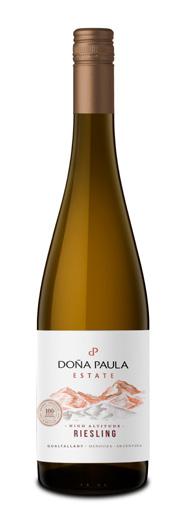
The Alluvia vineyard in Gualtallary, dating from 2007, is located at 1,350 metres of elevation. “So it’s like planting vines at the top of the highest mountain in the UK,” Martín points out, though in Mendoza terms we’re talking the foothills of the Andes.
“Over the years we’ve started to understand how this variety works. It’s a dry Riesling, and quite aromatic. This wine has just been fermented and then aged in stainless steel tanks. So everything that you get from the flavours is what the variety naturally creates in this kind of terroir.
“It’s quite expressive, it has some very fine herbal notes and it’s a little bit spicy. What is quite typical is that it has some honey notes on the nose that with time will transform into these petrol notes that are quite special.”
Euan McNicoll of McNicoll & Carnie is impressed by the value on offer here, describing the style as dry and delicate. “It reminds me of Alsace or Luxembourg Riesling,” he says. “Great acidity, good minerality, a bit of fruit. I’m not drinking this absolutely chilled, but the acidity still comes through.”
Doña Paula Estate Malbec 2021 (RRP £14.99)


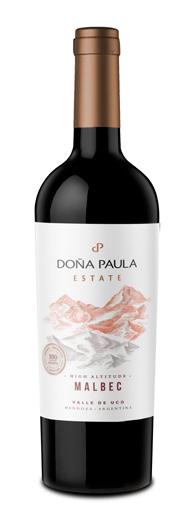

“What we want to show here is maybe not the typical Malbec that opened the door about 20 years ago when Argentina started exporting great amounts of the varietal,” says Martín. “It’s a high-altitude Malbec.” Indeed about 70% of the fruit comes from the same Ben Nevis-elevation vineyard as the Estate Riesling.
This is Doña Paula’s flagship wine, but it doesn’t rest on its laurels. “We’re studying how to make it better every time,” Martín explains. “The picking point is quite important here because we want to have this balance between the freshness and the round palate. We want this wine to be the perfect match for many different meals.”
The Alluvia vineyard fruit contributes some texture with its hallmark grainy tannins, while the 30% component of Los Indios grapes, from El Cepillo, are more velvety. It makes for a complex wine, but one that is easy to drink.
Doña Paula Altitude Blend 969
2021
55% Petit Verdot, 40% Bonarda, 5% Malbec (RRP £21.99)
The number 969 represents the altitude of the vineyards in Luján de Cuyo. The idea is to make “a modern style of wine from a traditional region”, so the Petit Verdot and Bonarda grapes spend up to eight months in concrete eggs. No oak is used, to accentuate the natural fruit characters.
“The egg helps to create this texture in the mouth and a little bit of tension in the tannin,” says Martín. “So it’s very fruity but it has some spice coming from the Bonarda. We balance the big muscular texture of Petit Verdot with something soft and elegant. There are velvety tannins from the Bonarda, which is sweet and rounded.”
Our guests are intrigued to know what the Malbec is contributing. “I think it’s hard to avoid the temptation of adding some Malbec,” Martín admits. “We’ve tried making the wine with Petit Verdot and Bonarda alone. And then when you add a little bit of Malbec, something happens to make it more rounded and complete.” A touch of artistry to go with the science.
2019
60% Malbec, 30% Syrah, 10% Cabernet
The 1100-metre altitude vineyard has sandy soil, with a deep calcareous layer beneath. “The wine has a balance between elegance and complexity,” says Martín.
“It’s a wine that has many layers. From an aromatic point of view, it’s fruity but at the same time herbal; a little bit floral. What is quite interesting is that it has some meaty flavours. Those are partly coming from the Syrah, but these calcareous soils also give you a meaty note.”
Euan McNicoll of McNicoll & Carnie agrees the wine is “floral on the nose, with a lovely lifted spicy character on the palate”. It has, he adds, a “very enjoyable tannic texture”.
This time the process is more traditional, with each variety fermented separately in tanks and then aged in French barrels, 20% of which are new. The vanilla notes are just discernible, adding extra depth and a hint of spice.
50% Cabernet Franc, 45% Malbec, 5% Casavecchia (RRP £21.99)
Cabernet Franc from Mendoza is establishing quite a reputation and it seems to take the limelight in this blend.

“In these conditions at very high altitude,
Cabernet Franc and Malbec show very distinctive flavours,” says Martín. “The wildness of the spices from Cabernet Franc combine with the fruity, floral notes that Malbec provides in the mouth.
“Malbec grown in these conditions gives you quite important tannins – they are quite grainy, but the Cabernet Franc is softer. So we combined both of them to get this balanced mouth feel. You will see that 1350 has a bigger structure than 1100.”
The wine is a highlight for Philip Amps of Amps Wine Merchants, and for Peter Langton, of Priory Wines, who loves its “freshness, vibrancy and complexity”. A “really classy wine”, he adds.
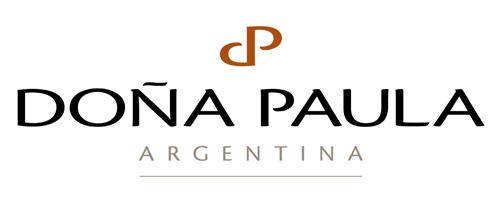
(RRP £63.99)
“This Malbec is our icon wine,” says Martín. “Everything that we learn, we apply to this wine. So this must always be the best wine from the winery. We want to show the very special potential of high-altitude Malbec from Argentina.”
Soils are up to 60,000 years old in this Gualtallary vineyard. Martín and his team identified a section with a particularly calcareous composition, creating stress in the vines. “Maybe it’s not nice for them,” he says, “but it makes the grapes ripen in a different way and produces more concentrated wines: Malbec with complexity and concentration, and high potential for ageing.”
The wine has an intensity and scale that comes as quite a jolt to the system, and it will mellow with age. But already there’s suppleness and finesse that completes the thread woven throughout the Doña Paula range, at every level.
Produced in association with Wines of Navarra
When it came to the wines, The Oxford Wine Company’s Tom Brady sums things up nicely. “I was really impressed with a lot of what the wineries in Navarra are doing,” he says. “There’s a huge diversity in terms of growing and winemaking practices and there really is something for everybody, whether they’re socially, economically, ethically conscious, or like funky and new or more traditional expressions, or they just want to taste good wine.
“Our customer base is just as diverse, which makes the region an easy go-to option for our retail team.”
The 10,000 hectares of Navarra stretch from the plains of the river Ebro in the south, to Pamplona in the north. Climatically, geographically and topographically diverse, this fascinating DO is home to a fantastically diverse range of wine styles.
A group of UK wine buyers recently visited Navarra and came home uniformly impressed by what they saw and tasted.
Sarah Helliwell, head of wine at Eight Stony Street and Wilding (pictured right), describes Navarra as “incredibly varied and evolving”. She adds: “It was one of the most interesting regions I have visited in a long while. Beautiful vineyards across so many microclimates, all with their own characteristics but a unifying sense of wildness and innovation.”
“The trip was wonderful, and a revelation in terms of changing my perception of what’s going on in the Navarra region,” adds Owen Morgan of 44 Group, the bar and restaurant operator.
“The winemaking, direction and thought processes across bodegas impressed me, from the traditional to the progressive.”
DO Navarra is made up of five subregions: Baja Montaña, Valdizarbe, Tierra Estella, Ribera Alta and Ribera Baja. Vineyards are everywhere – from the
plateaux and plains to slopes that reach 700 metres above sea level. Morgan says: “We covered large parts of Navarra, from Ribera Baja in the south to Tierra de Estella in the northernmost part of the region. Seeing the snow-drenched Pyrenees while among the vines was wonderful: a stark contrast to the semidesert conditions in the centre of the region.”
In the vineyards, everyone noted the commitment by winemakers to the environment. “It was great to see several vineyards embracing organic and sustainability practices,” says Kelly Boss of StarmoreBoss in Sheffield. “This was apparent in co-planting techniques to protect vines and for irrigation. Regenerative farming methods were also being used. Bug hotels and bird boxes encourage wildlife and establish a balanced ecosystem within the vineyards.”
Wine consultant Isobel Salamon was also taken by the green ethos. “Bodega Ochoa particularly impressed with its ecosystem building with honey, herbs, almonds … this regenerative approach is something I’d want to shine a spotlight on when talking about Navarra,” she says.
Everyone had some favourite wines from the trip.
Helliwell says: “I was hugely surprised not only by the diversity but also the quality of the wines. I had envisaged a lot of Garnacha with some Tempranillo and Bordeaux varietals in the mix, but some of the stand-out wines for me were barrelaged Chardonnays and Syrah.

“The Chardonnays were amazing, I think some of the most memorable wines for me and definitely some which I will be enthusiastic to put in front of customers.
“With prices heading up fast across many regions, these are just an incredibly affordable option.”
Salamon – along with many – was blown away by Sierra Perra Garnacha from Bodegas Alconde. She also expressed a massive soft spot for the Finca Albert Late Harvest Chardonnay, which she says had amazing white choc chip macadamia cookie notes. “I was struck by the freshness of so many of the wines we tasted; so many of them were brilliantly alive and vibrant. It wasn’t something I was expecting.”
International stars Chardonnay and Syrah found favour time and again. “Across the region we were particularly impressed
by the barrel-fermented Chardonnays and Syrahs,” says Brady. Boss adds: “I was surprised by the number of French varieties that are being planted and the use of new French oak barrels, which were highlights in the cooler climate to the north and allowed for some fresher expressions.”

Morgan at 44 Group says: “Bodegas Ochoa impressed me hugely in so many ways. The passion of Beatrice and Adriana [the winemaking sisters] was inspiring. The vision and direction is incredible. Bodega Caudalia impressed me so much that I have already progressed talks to bring certain bottlings into the country to get going on our wine lists. They’re making tiny quantities of Grenache but also mindblowing Syrah, all of which sing of the land.
“On a completely different tack, I fell in love completely unexpectedly with some barrel-aged Chardonnay at traditional producer Castillo Monjardin.”
The visit also made it very clear that pairing Navarra wines with food can be wonderfully memorable.
“We enjoyed a stunning foie and apple canapé with the Otazu Chardonnay… I can still taste the pairing now,” Morgan says. “At Ochoa we were treated to some hearty local chorizo and Navarra migas, with their Mil Gracias Graciano bottling, which was equally memorable.”
For Brady, “asparagus and Moreno y Caberzón Garnacha Blanca at Bodegas Alconde was heaven”. Boss picks out Bodegas Unsi’s sweet Dulce Garnacha, “paired with a sweet gingerbread biscuit, local to the area, and a salty goats’ cheese pairing with Chardonnay at Bodega Otazu”.
The number of female winemakers was a noteworthy feature of the trip. “Where there was a woman winemaker, the wines were consistently very good,” says Salamon. Morgan adds: “The number
of female winemakers was refreshing, and something I feel the DO could really push into the limelight.”
Commenting on Bodegas Ochoa, Boss says, “Beatrice and Adriana have brought three generations of winemaking into the 21st century. Adriana has managed the seamless transition of traditional winemaking techniques and combined it with a modern approach to winemaking. There is no generational friction here, just quality wines that have an X-factor that runs through the portfolio.”
Navarra thrilled, surprised, and delighted the buyers in equal measures. Irresistible wines, dynamic winemakers and a strong environmental focus make it a region with great consumer appeal.

For more information visit navarrawine.com #navarrawines
@vinosnavarra

A free-pour tasting designed to showcase the diversity and quality in the company’s portfolio.
Known for its Portuguese specialism, Raymond Reynolds also offers a range of wines from Spain and Germany. For more information and to register, email info@raymondreynolds.co.uk.
Monday, March 27
Diogenes The Dog
96 Rodney Road
London SE17 1BG
Due to train strikes, the date of this event has changed from the date published in the February issue. Contact daveroles@bodegasriojanas. com.
Tuesday, March 28
Westminster Kingsway College
76 Vincent Square
London SW1P 2PD
This is a unique opportunity to try the new vintage from over 30 châteaux. Business France promises the wines “offer great quality at affordable prices”. Contact pandora.mistry@businessfrance. fr for more information.
Tuesday, March 28
The Dilly Hotel
21 Piccadilly
London W1J 0BH
The two specialist importers are joining forces for this Shoreditch tasting. Both companies have long-standing relationships with family-owned wineries across Europe.
For more information or to register, email simon@yapp.co.uk.
Tuesday, March 28
The Light Bar
233 Shoreditch High Street
London E1 6PJ
This is the fourth portfolio tasting from Daniel Lambert and the importer has chosen to host it outside London for the first time.
For more information and to register, contact tim@daniellambert.wine.
Wednesday, March 29
The Airstream
Paintworks
Bath Road
Bristol SW4 3EH
Wines with “nothing taken out, nothing added, nothing changed” from 45 French producers.
This event has been in planning for several years and is a first for London.
Registration information is available from claire.prothon@businessfrance.fr.
Monday, April 3
The Oxo Tower Barge House Street
London SE1 9PH

This is the most comprehensive tasting of German wines in the UK, according to the specialist importer.
Join the team and their German winemakers for an afternoon of exploration.
Contact nancy.green@howardripley.com for more details.
Wednesday, April 12
No 11 Cavendish Square Chandos Street
London W1G 9EB
The most recent Winetraders tasting wilfully avoided the company’s Italian specialism. But the Boot is the centre of attention this time.
When Michael Palij MW started the business in the late 1990s he sought out the country’s viticultural pioneers, many of which are now mainstays of the portfolio, and encouraged them to fulfil their potential, sometimes by taking a new approach to their viticulture.
“Our philosophy has always been to make that first step for our customer,” he says. “Will new estates like Esole, Bottazzi, Dorgali and San Valentino be tomorrow’s heroes?”
Register at info@winetradersuk.com.
Monday, April 17
67 Pall Mall
London SW1Y 5ES
More than 70 producers will be showcasing their wares at the 12th edition of Real Italian Wine & Food. The event will feature a mix of products already imported in the UK, and some seeking representation here for the first time.
Contact Manfredi Nulli at realitalianwinefood@gmail.com.
Thursday, April 20
RHS Lindley Hall
8 Vincent Square
London SW1P 2PB
This tasting, dedicated to all types of fortified wine, was first established over a decade ago and is now headed by Alex and Elizabeth Bridgeman.
Wines from Andalusia, the Douro Valley,

Madeira and several other regions will be on show..
There will be two masterclasses on the day.
Contact admin@thebft.co.uk.
Thursday, April 20
Church House Conference Centre
27 Great Smith Street
London SW1P 3AZ
The importer will be showcasing over 150 wines from its portfolio.
South Africa, Italy, France, Spain, Portugal, Australia, New Zealand, Argentina, Germany, Austria and Bulgaria will all be represented.
Contact robin@swig.co.uk for all registration enquiries.
Monday, April 24
China Exchange
32a Gerrard Street
London W1D 6JA
The literal Cheesecake Master and Doesn’t Really Give a Fuck Kyle – also collector of humorously defaced Subway (Clockwork Orange not footlong) “Break Glass for Emergency Access” signs (current favourite: “Freak Ass for Emergency A—ss”) brought us in a bag of butteries, sneaked out of the Hippy kitchen in exchange for our excellent wine shop banter and Kankyo Ongaku.
Are you familiar with the buttery? You may also know it as the rowie, but no one calls it that except Scottish Jay Rayners. The buttery is a dirty squashed croissant, a filthy Scottish fisherman’s croissant, although impeccable French Matt says they are proud enough not to glance at a croissant for legitimation. They’re buttery, lardy rolls, which no, doesn’t sound like they should be made in a Hippy kitchen but then, we’ve met Doesn’t Really Give a Fuck Kyle, haven’t we?
Usually, I would not be able to indulge my deeply felt adoration for the buttery, given that they are carbcentral+ plus lard. However I am in the early stages of breaking free from the carb-limiting and into another, intermittently hedonistic and poorly researched dieting fad: intermittent fasting. This month I’m not eating lunch.
Late last Wednesday night, in a mood of weird misery scrolling on Instagram (I’m fine though!) I chanced upon a tiny infogram(?) about intermittent fasting. I didn’t click on it (too wise) but I got the take-home message: women 35-45 try the 18:6 balance of eating/not eating. Lunch is now at 4pm, beginning with a little light crisping or Tunnock’s teacake, then whatever I fucking want (another bonus of poor research) until the clock strikes at 10 and I turn into a pumpkin. The opposite of a pumpkin. A carrot?
In addition to the almost certain imminent weight loss there are several
Phoebe Weller of Valhalla’s Goat in Glasgow is fasting intermittently. The intermissions often involve a dirty squashed croissant that polite people know as a rowie

whether we’re closed, yes, yes we are. I’m also indulging and squeezing dry American customers in stealth sales, best performed on a stomach that’s been empty for 14 hours.

Just when you think it will never come, 4pm strikes, and with it excess. Yesterday I had a bowl of giant Wotsits with melted cheese, and guacamole dip to break my fast.
pleasing ricochet effects, the greatest being a kind of Kyle Vibe that occurs between 12pm and 4pm which happily coincides with my infrequent although existent “working hours”. People are being very kind to me just now and I intend to take advantage of this as much as possible, by layering in – much like lard into a buttery – long periods of self-enforced withholding from food. I’m a bit cheekier. I have a mad look in my eye. I’m telling the customers who come in at 2pm and ask
Magnificent, much better than tortilla chips and all lacy with microwaved cheese. On Sunday, Ann brought in the much and justly heralded Ottolenghi spicy pork and mushroom lasagne, and some squirrelledaway stollen bread-and-butter pudding which, when I suggested the addition of cream, was met with, “You’re wild today, Phoebe!” Yes I am, raar.
I ate the butteries. Two, pleasingly doorstopping the excellent Lidl Mortadella (thanks Mike), Co-op Edam and a sprinkling of grated carrot.
Other benefits of this diet include shouting at long-suffering Tony “where’s my fucking dinner, I only have 43 minutes left” when I get in after work. He has wisely taken to having a walk between 9pm and 10pm.




12-14 Denman Street
London W1D 7HJ
0207 409 7276







enquiries@louislatour.co.uk www.louislatour.co.uk




Independently owned by the Bertin Teillaud family, Château des Demoiselles, located in the Esclans Valley and Château Sainte Roseline, a Cru Classé estate in Les Arcs, produce wines from 100% estate-grown fruit that have Organic and High Environmental Value 3 certification.


Château des Demoiselles Rosé

A lighter style of rose, redolent with soft berry fruits, a smooth palate and a juicy citrus finish.

Château Sainte Roseline
Lampe de Meduse Rosé
Here red fruits are combined with mineral notes and a lingering finish.
Château Sainte Roseline
Cuvée de la Chapelle Rosé


The finest expression from this prestigious estate. Greater complexity makes it a flexible partner with many foods including shellfish, smoked salmon and grilled chicken or vegetables.
New Bank House
1 Brockenhurst Road
Ascot
Berkshire SL5 9DL
01344 871800



info@hatch.co.uk
www.hatchmansfield.com
@hatchmansfield
Technical Director
María is the Technical Director of the entire C.V.N.E group. In addition to overseeing the winemaking of all estates she makes the Cune, Imperial and Monopole wines at C.V.N.E.’s historic winery in Haro


At Viña Real in the Rioja Alavesa, Eva has perfectly managed to combine respect for a traditional approach to viticulture, winemaking and ageing of the wines, as well as embed new technologies to improve quality.
The latest talented young winemaker to join the team at C.V.N.E., Sara is responsible for the day-to-day winemaking at Bela in the Ribera del Duero.

Three bodegas, led by three talented winemakers, united by a common goal: ‘ to make the best possible wine. ’
María Larrea
C.V.N.E.Sara Juan Winemaker at Bela Eva de Benito Winemaker at Viña Real
The Dutch Barn
Woodcock Hill
Coopers Green Lane
St Albans AL4 9HJ
01707 274790


info@gonzalezbyassuk.com www.gonzalezbyassuk.com


@gonzalezbyassuk
London NW1 8UR
0207 449 1665
orders@walkerwodehousewines.com www.walkerwodehousewines.com

@WalkerWodehouse


Rouvalis in the Peloponnese is a benchmark producer of terroir-driven wines, including Mountain Roditis and Tsigello. For Santo Wines in Santorini, the focus is firmly on Assyrtiko, with the offer of a classic vinification, as well as their Vinsanto dessert wine, comprised of 85% Assyrtiko and 15% Aidani
For more information, please contact your account manager.

Jessica Hutchinson
jessica@vindependents.co.uk
www.vindependents.co.uk







Mulberry House
Parkland Square
Luton LU1 3LU
01582 722 538
sales@hnwines.co.uk
www.hnwines.co.uk




chris.davies@lgcf.fr 07789

Having started with the business in January, Jon is responsible for the strategic development of Famille Helfrich’s route to market in the south. Day to day he will manage and develop our existing independent merchant customers as well as our core on-trade wholesale accounts.
Holding WSET Diploma and WSET Wine Educator qualifications, Jon will be perfectly positioned to develop customers in the south for GCF’s exciting range of owned châteaux and domaines from across France alongside a growing portfolio of properties from other parts of the world.
“Les Grands Chais de France owns over 4000ha across 75 châteaux and domaines, so Famille Helfrich has a huge selection of wines to offer the on-trade and independent merchants,” says Chris Davies, channel controller for Famille Helfrich.

“We are really pleased to have Jon on board to help develop and drive sales of our fabulous wines into London and the south. Not only will Jon make new customers aware of the breadth of our offering, he will also build the premium image of Famille Helfrich wines across the UK.”


104d St John Street
London EC1M 4EH
020 7609 4711
info@berkmann.co.uk
www.berkmann.co.uk
@berkmannwine


@berkmann_wine

Unit 5, The E Centre
Easthampstead Road
Bracknell RG12 1NF
01753 521336
info@buckingham-schenk.co.uk





www.buckingham-schenk.co.uk
@BuckSchenk
@buckinghamschenk
Kings Langley WD4 8LH
01442 870 900
For more details about these wines and other wines from our awardwinning portfolio from some of the world’s leading wine producing families contact:

info@fells.co.uk www.fells.co.uk


@FellsWine
je_fells


Middlesex TW13 6JE
020 8744 5550
info@richmondwineagencies.com
@richmondwineag1

Pale pink in colour, this rosé from the Languedoc is made with 100% Piquepoul Noir to create a beautifully fresh and elegant style wine.

It has an expressive nose with delicate floral aromas of cherry blossom, rose petals and lilac, and fresh fruit notes of strawberries, peaches and even mango.
The palate is wonderfully bright with summer berry flavours and fresh citrus notes of lemon and lime, leaving you with a fresh crisp finish. The grapes are carefully handled in stainless steel to preserve the fresh fruity character.
020 7840 3600
info@mentzendorff.co.uk

www.mentzendorff.co.uk

Champagne AYALA reinvent their three Brut Cuvées with a premium new bottle shape, label and revised blend for Brut Majeur





It’s a new era for Brut Majeur, with an even higher proportion of chardonnay, reserve wines, a greater diversity of crus and a lower dosage, preserving AYALA’s characteristic purity of style. The range encapsulates the purest expression and mastery of Chardonnay, the Maison’s signature grape variety.






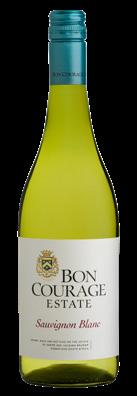
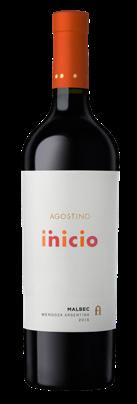





For more information, please contact your Mentzendorff Account Manager




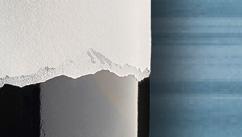























We salute all the wonderful wine people we are fortunate to work with, whatever their gender, but this month celebrate the talented female winemakers (happily there are too many to mention here).
In Burgundy, Jane Eyre was named Négociant of the Year in the 2021 Grands Prix de La Revue du Vin de France, the first woman to be awarded the title, while Vanya Cullen, who has headed the legendary Margaret River estate for over 30 years, was awarded Winemaker of the Year by the 2020 Halliday Wine Companion Awards. Helen Masters was named New Zealand Winemaker of the Year by Gourmet Traveller Wine in 2019 in recognition of her 16 years at Ata Rangi, and Elena Brooks, owner/winemaker at Dandelion Vineyards, was crowned 2021 Bushing Monarch at the prestigious McLaren Vale Wine Show. Andrea Mullineux, co-founder of one of the most lauded wineries in South Africa, was awarded International Winemaker of the Year by Wine Enthusiast in 2016. And Heidi Schröck, voted Vintner of the Year by Falstaff magazine, has pioneered the role of women in the Austrian wine scene and led an organisation dedicated to promoting female winemakers.



From Stephanie Toole of Mount Horrocks in the Clare Valley to Antonella Corda in Sardinia, Beatriz Cabral de Almeida at Quinta dos Carvalhais in the Dão, María Barúa at Bodegas LAN in Rioja Alta, Marelise Niemann of Momento in the Swartland and Bot River, Fang Wang of Kanaan in Ningxia, China and beyond, we raise a glass to the women whose unwavering passion and pursuit of excellence sees them among the world’s most respected winemakers today.










Do you have any sporting loyalties?
I have spent many a cold and rainy day on the sidelines watching Blackheath rugby union club play. I also love rugby at international level, supporting England of course, and was fortunate enough to see the British Lions on their last tour in Australia back in 2013. I’m looking forward to the next one there in 2025.
Who’s your favourite music artist?
If I need cheering up I go back to the golden oldies like Frank Sinatra, Nat King Cole and Nina Simone. I usually have something classical on in the background when working from home but would not call myself musical.
Any superstitions?
The usual not walking under ladders and touching wood for luck.
Who’s your favourite wine critic? That’s like asking me to name a favourite child! I would have to say Oz Clarke, because he is unfailingly enthusiastic, generous and supportive and has a turn of phrase (and song) like no other.
What’s your proudest moment?
Passing my MW back in 1997. It opened so many doors and has shaped my career since then. I can hardly believe that it’s over 25 years ago.
Born into a Navy family, Laura Jewell “moved around a lot” as a child but spent most of her school days in Plymouth. She graduated from Birmingham University with a degree in Classics before joining Waverley Vintners, passing her MW exams in 1997. She then joined the Sainsbury’s buying team, which was followed by stints with HwCg and Spar UK before she was appointed head of wine development at Tesco. In 2015, after five years in that role, she became regional general manager for Wine Australia.

What’s the first wine you remember drinking?
My dad was a member of a wine tasting group and would let me taste the wines as a teenager and ask me to describe the different flavours.
What job would you be doing if you weren’t in the wine trade?
I once had the ambition to become a helicopter pilot and applied to the Royal Navy, but realised a Classics degree was not scientific enough.
How do you relax?
Reading, usually with two or three books on the go at once. I can lose myself for hours in a good book.
What’s the best book you’ve read recently?
I’ve been reading the full series of Simenon’s Maigret. He has an extraordinary depth of understanding of human nature and what makes people do the things they do. His characterisation is precise and rarely sympathetic.
Give us a Netflix recommendation. Sorry, I don’t have Netflix, but I have been catching up on Strike (by Robert Galbraith) on BBC iplayer. Tom Burke is brilliant in the title role.
What’s your biggest regret? Gladly, too few to mention.
Who’s your hero?
My mum. She was one of the first women police officers in Plymouth in the 50s and she brought me up to believe that I could do anything I set my mind to. I miss her strength of mind.
Any hidden talents?
Not that I’ve discovered.
What’s your favourite place in the UK? The beach at St Andrews in Fife, Scotland. When I lived in Scotland it was my regular Sunday morning walk, in all weathers, from snow to blue skies to fog. It cleared the mind and blew the cobwebs of the week away.
If we could grant you one wish, what would it be?
Selfishly, to win the lottery and retire to the south of France.
“A Classics degree was not scientific enough to be
Navy helicopter pilot”
